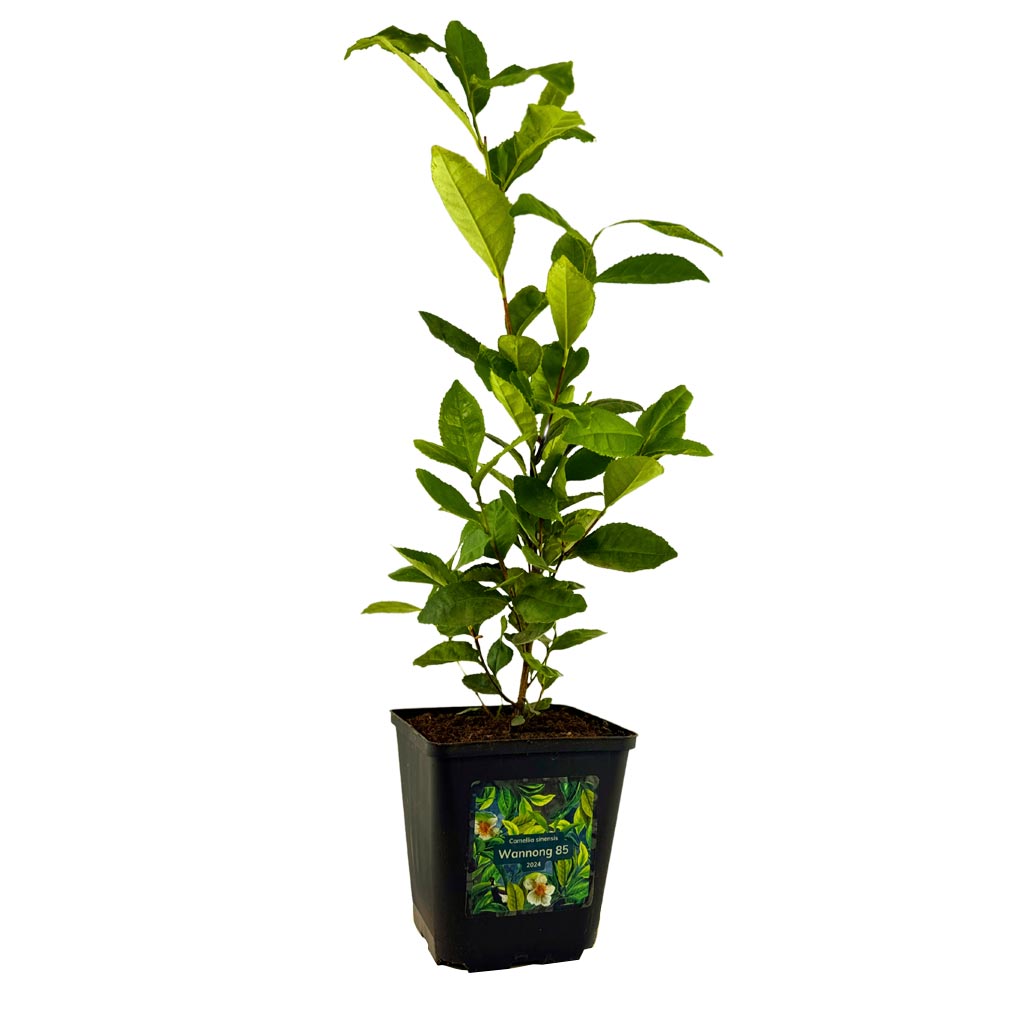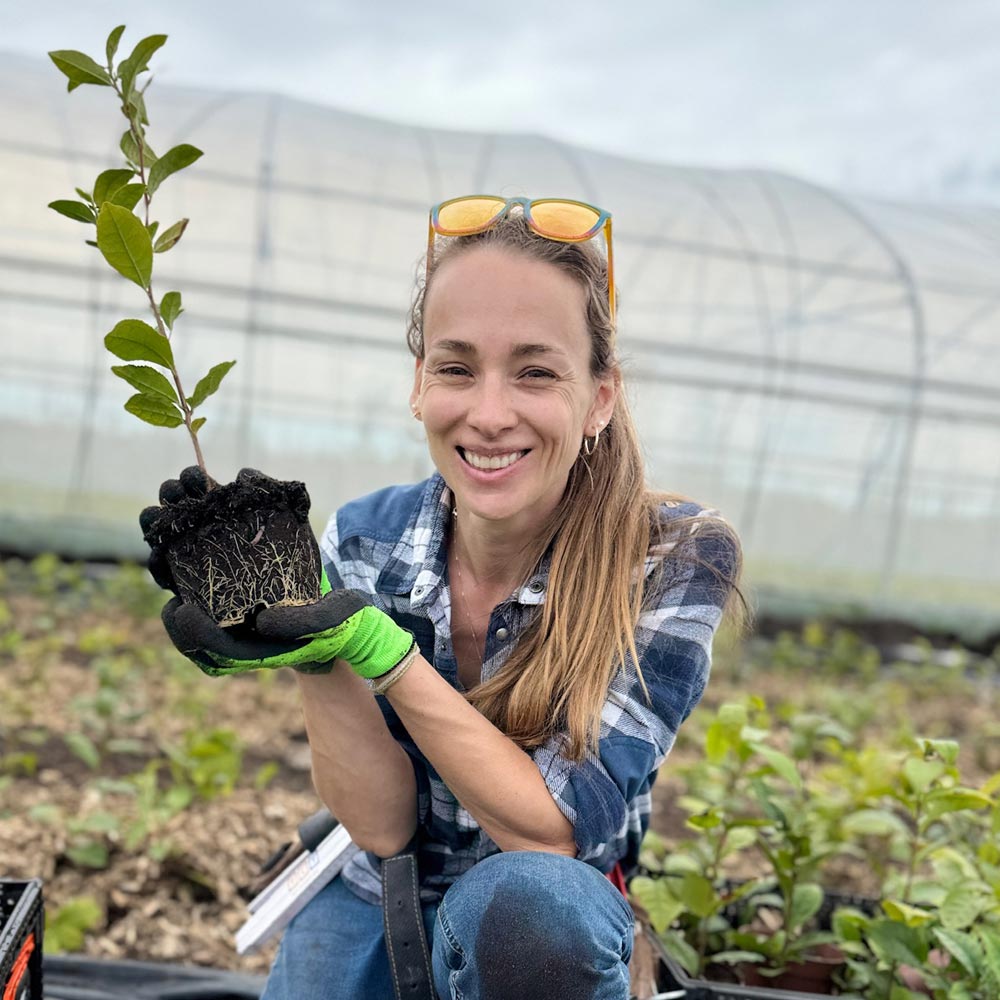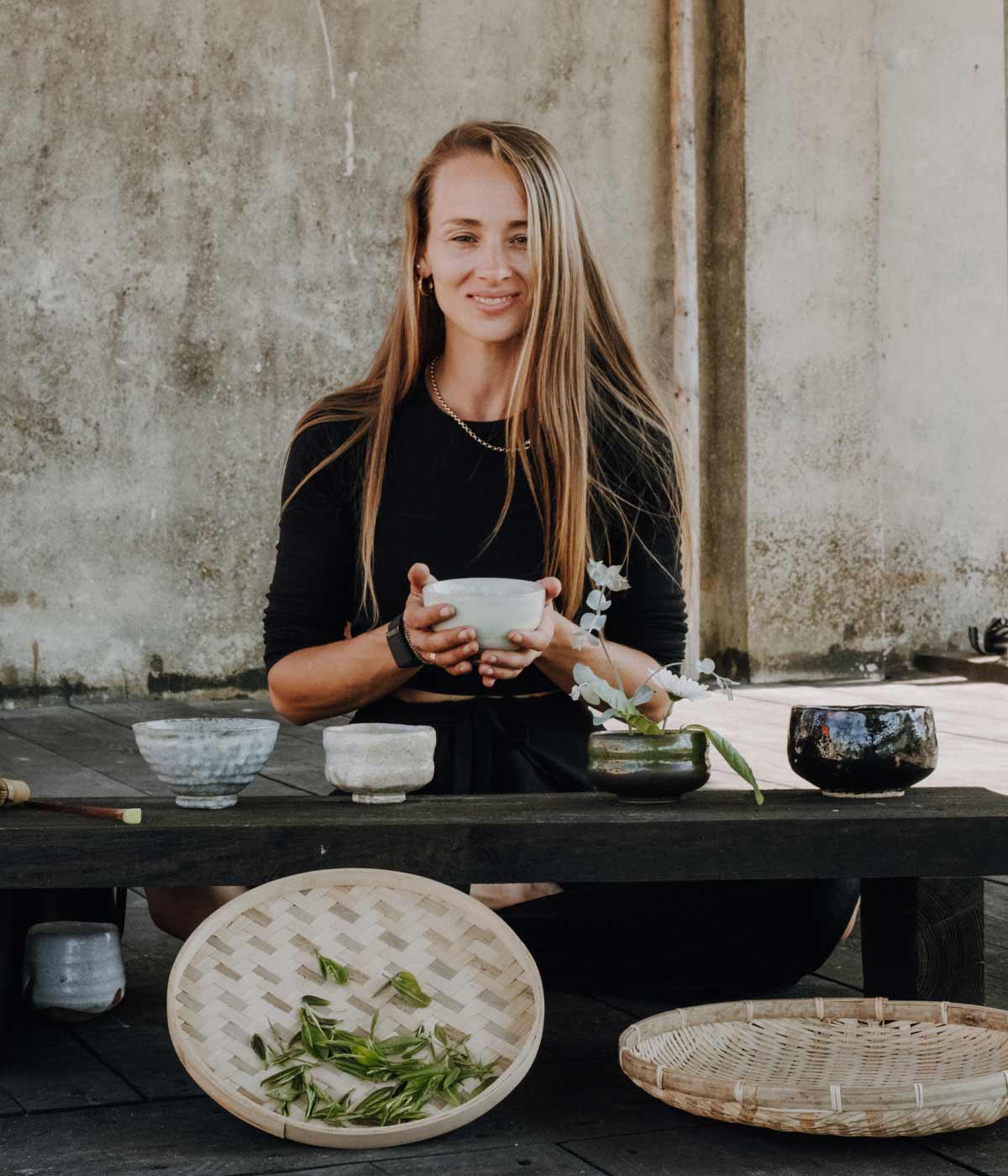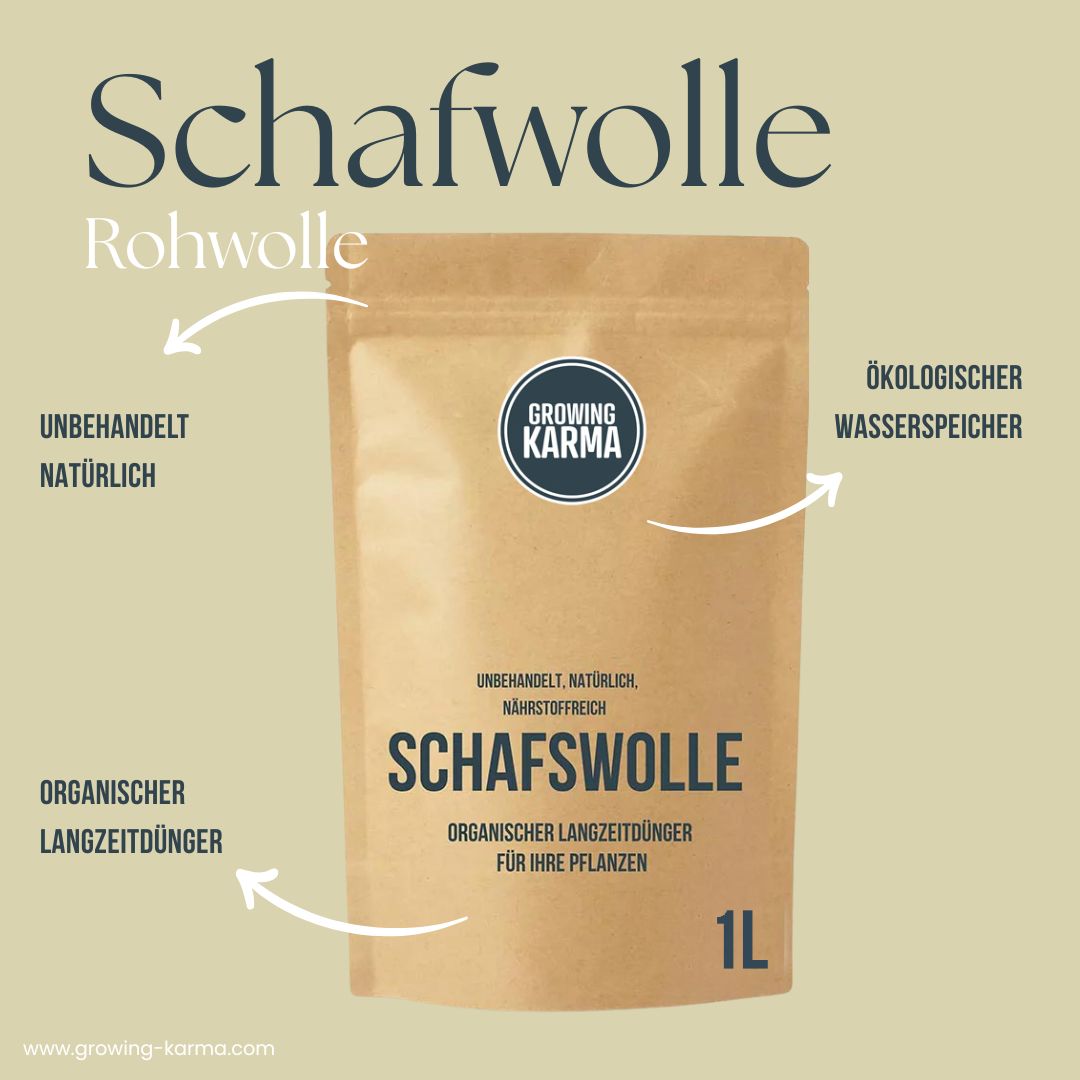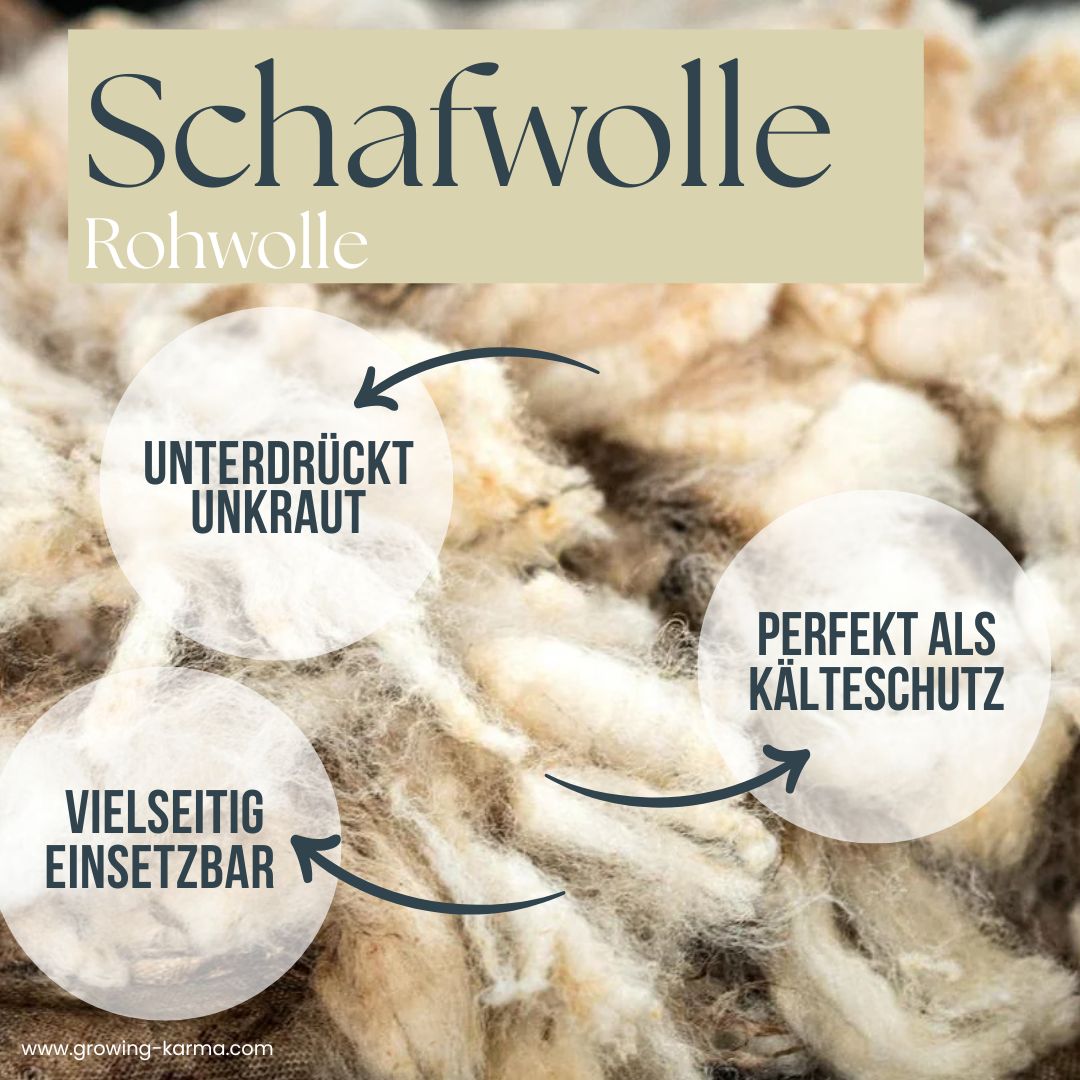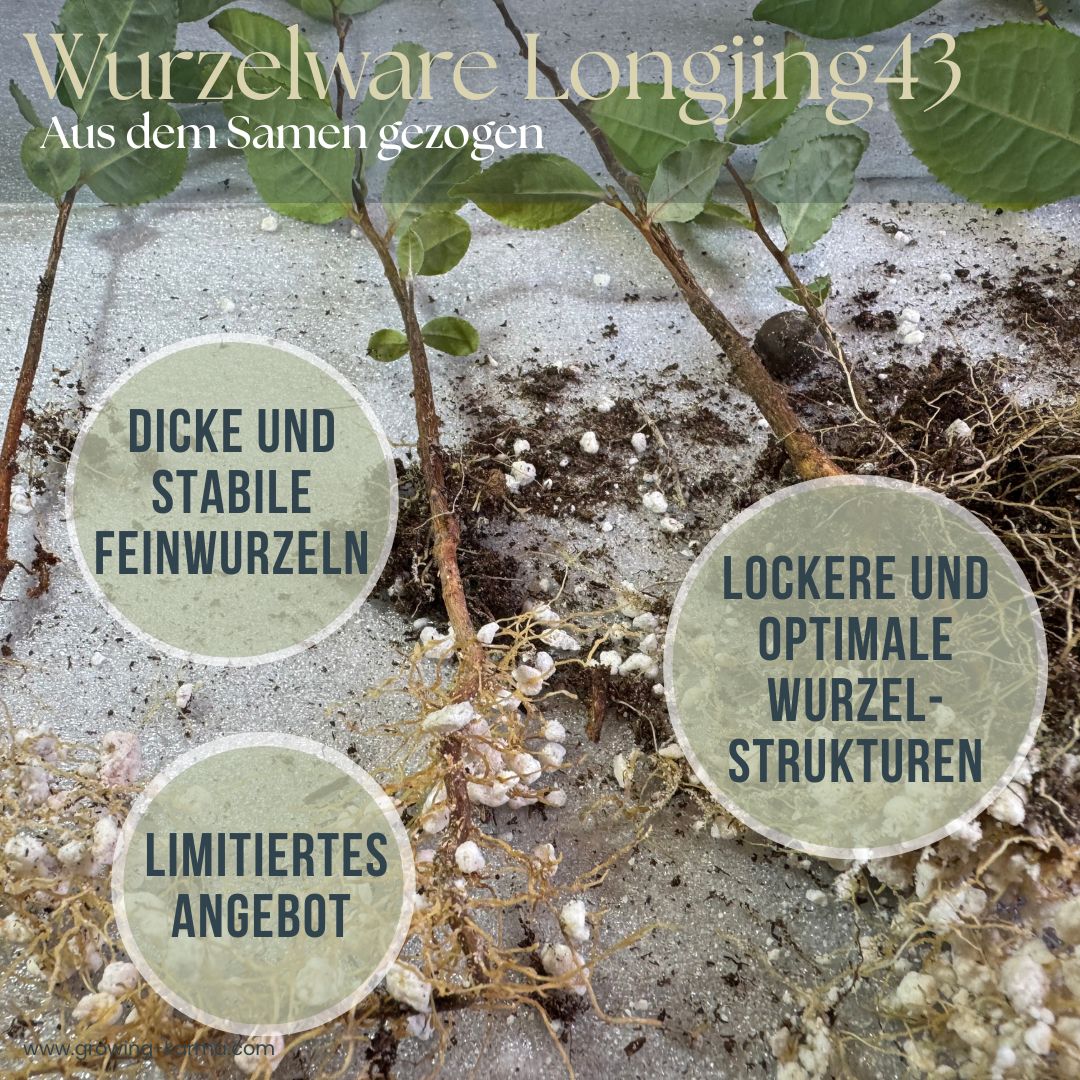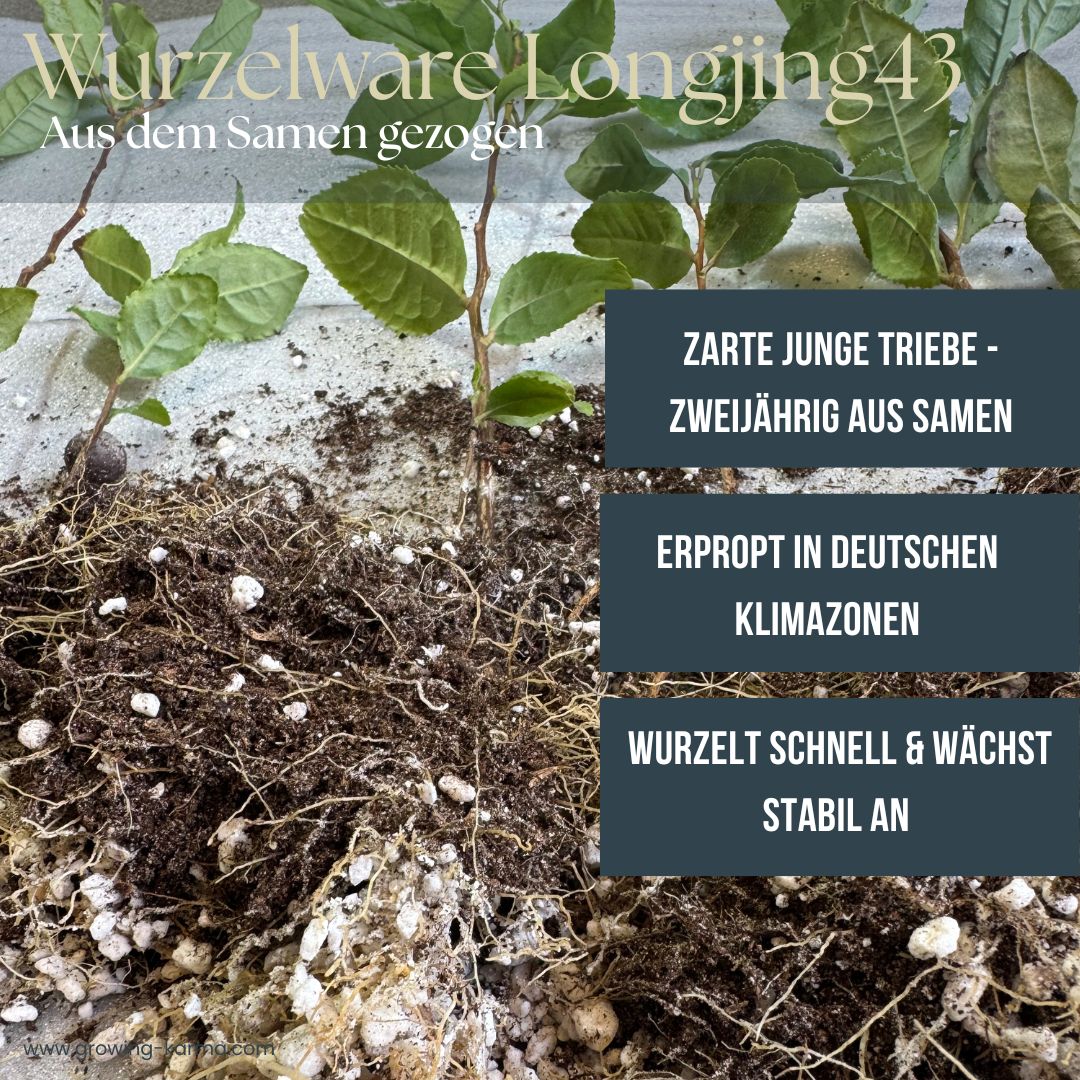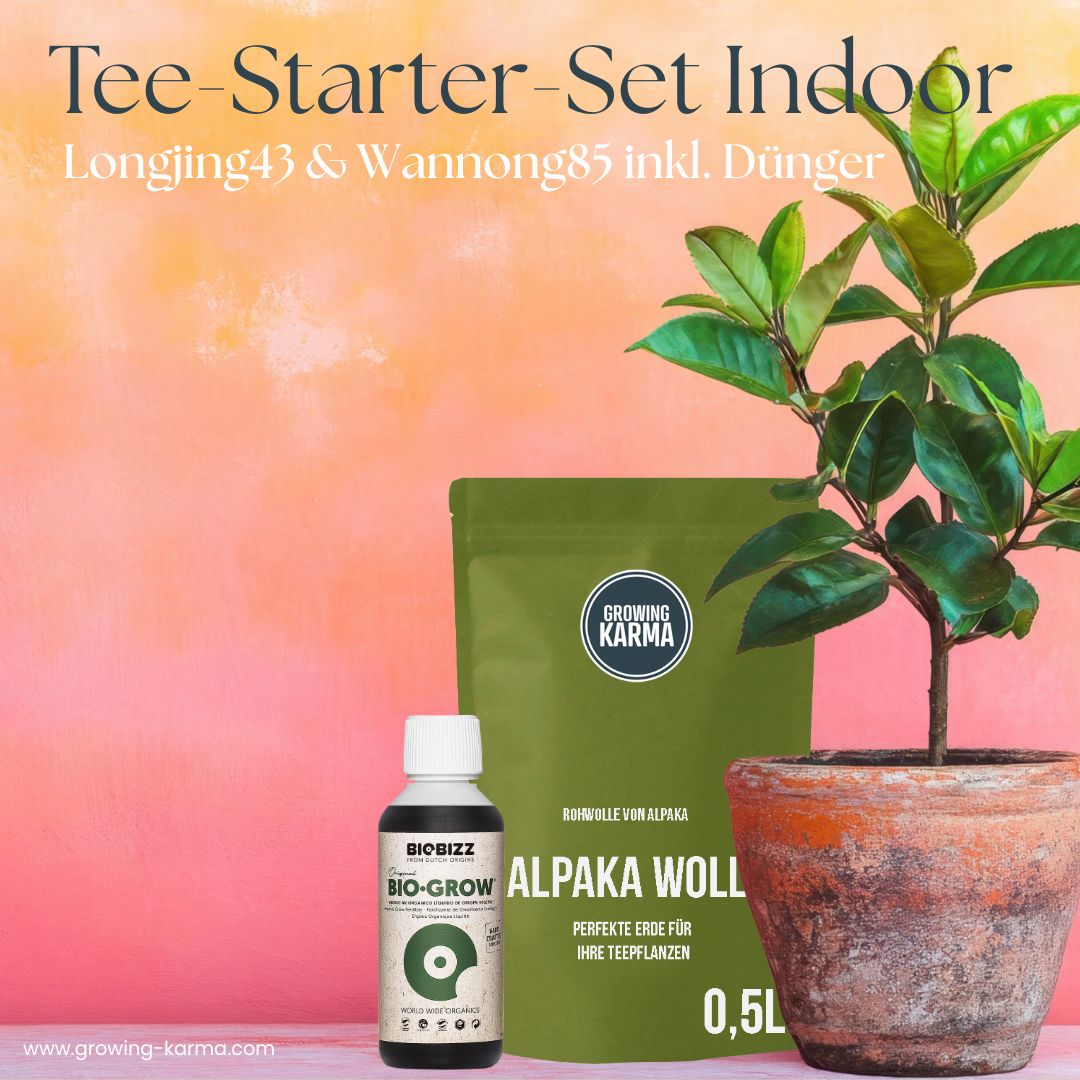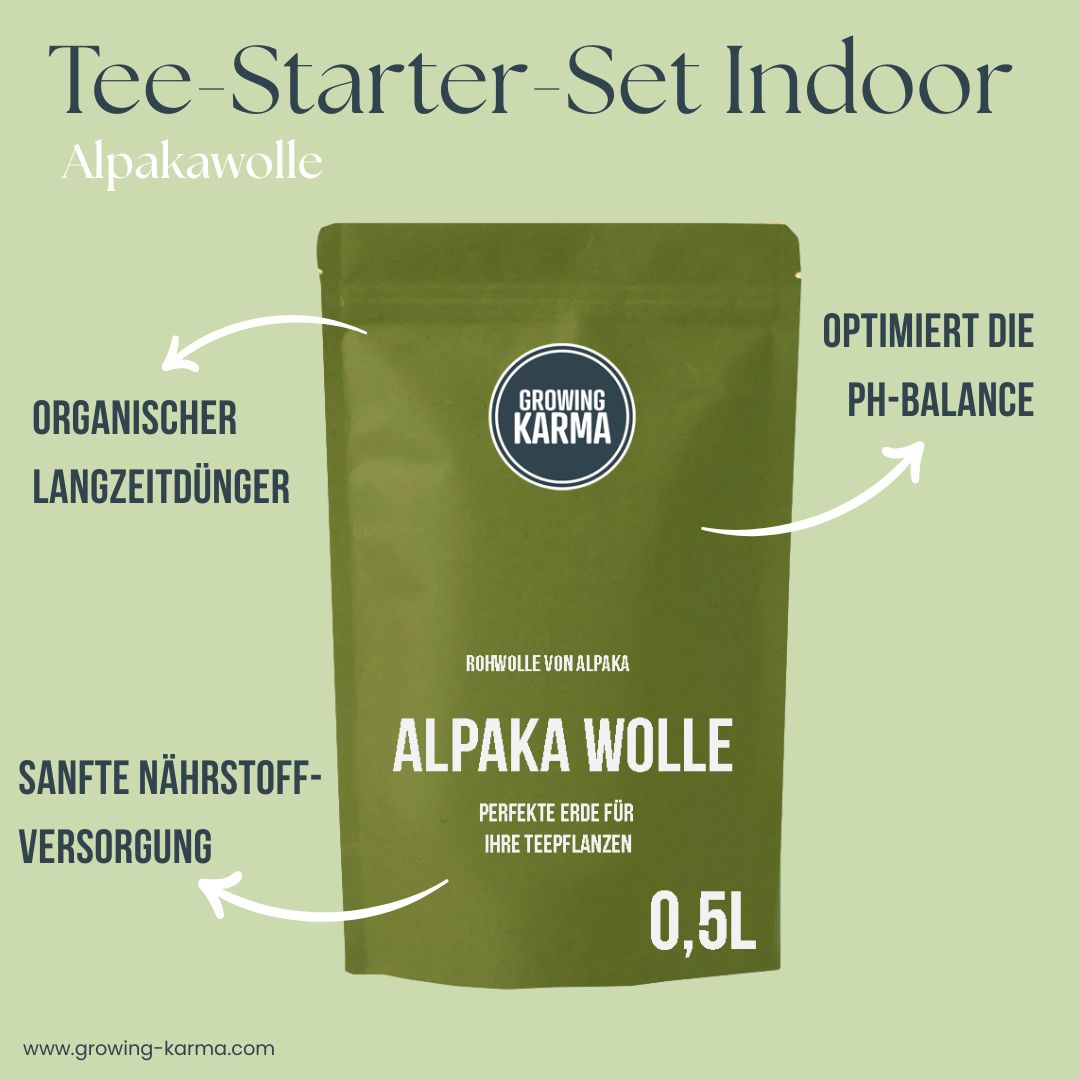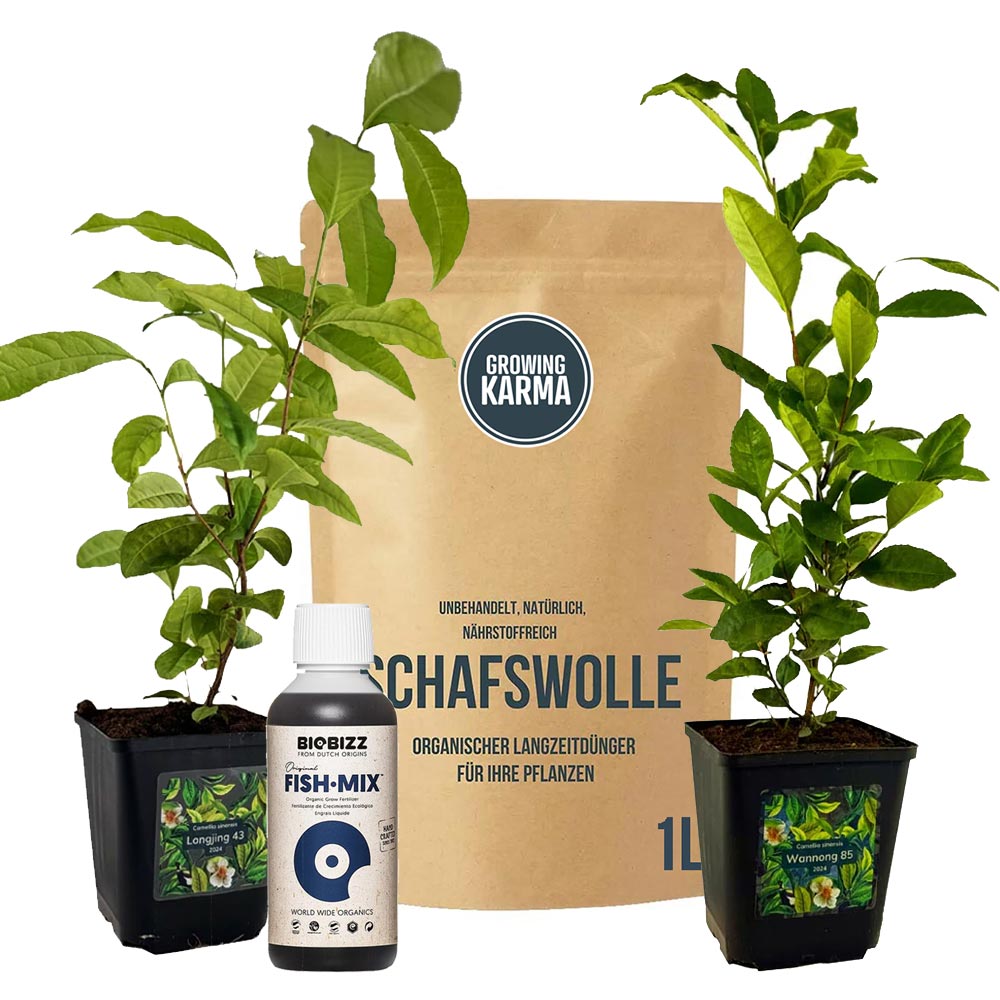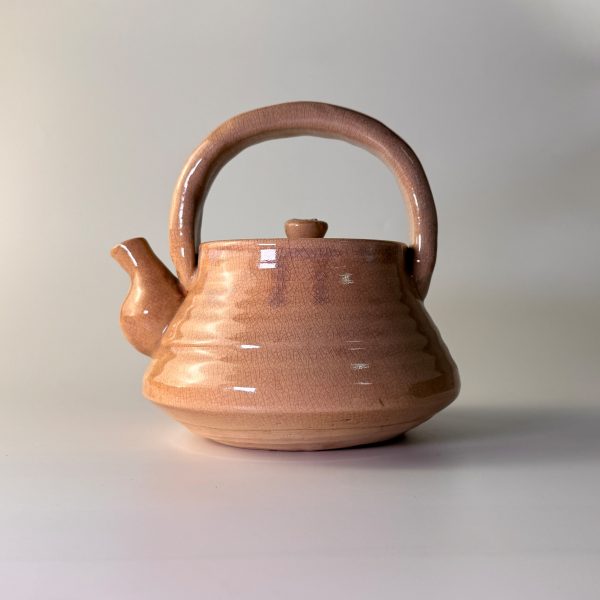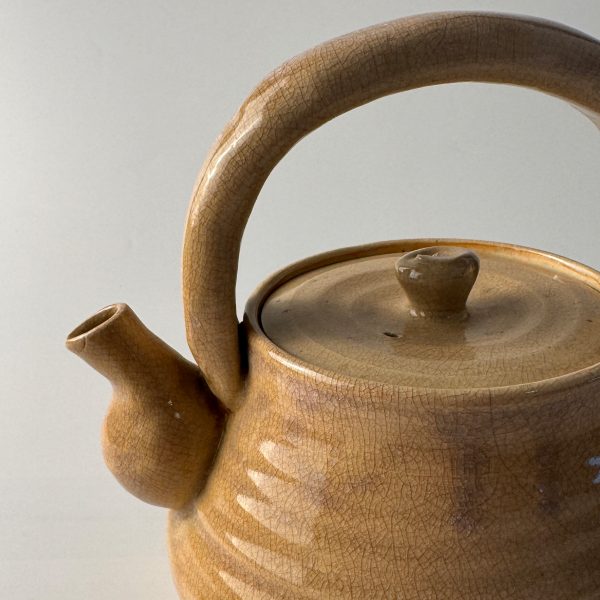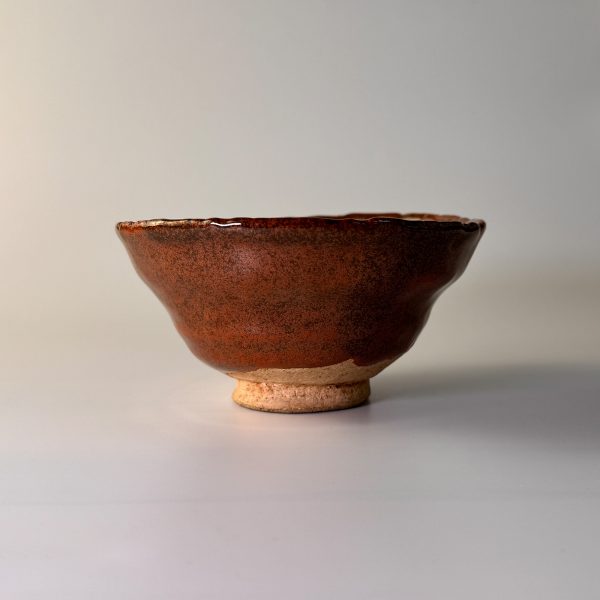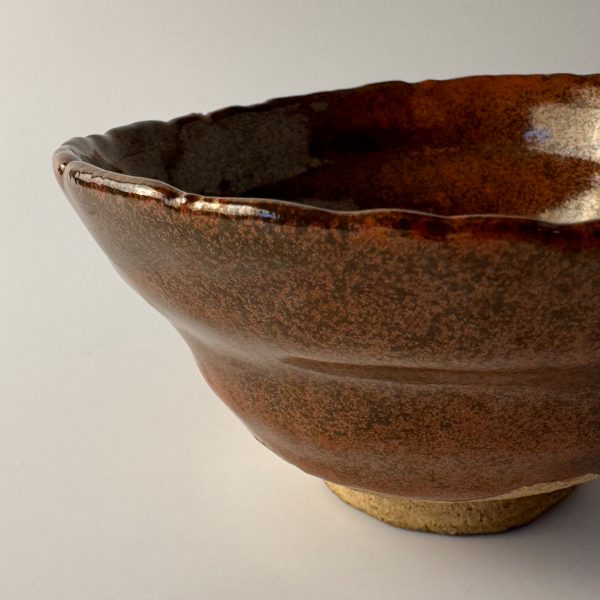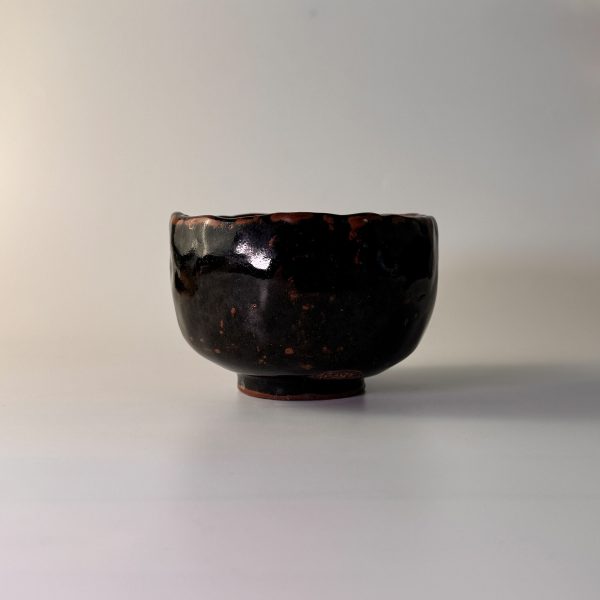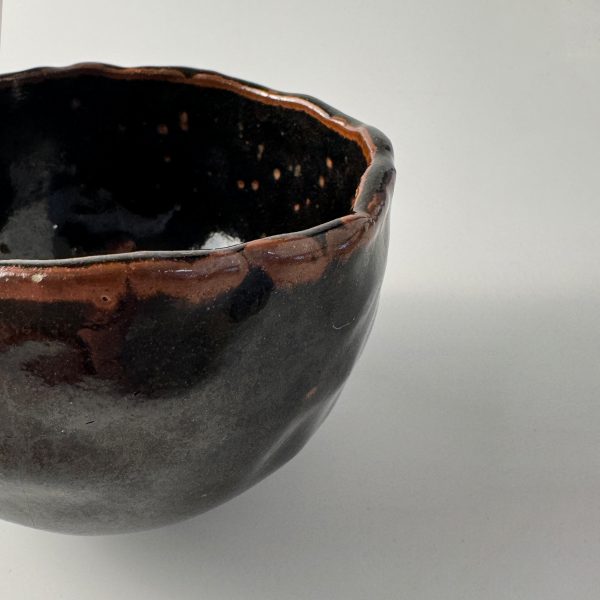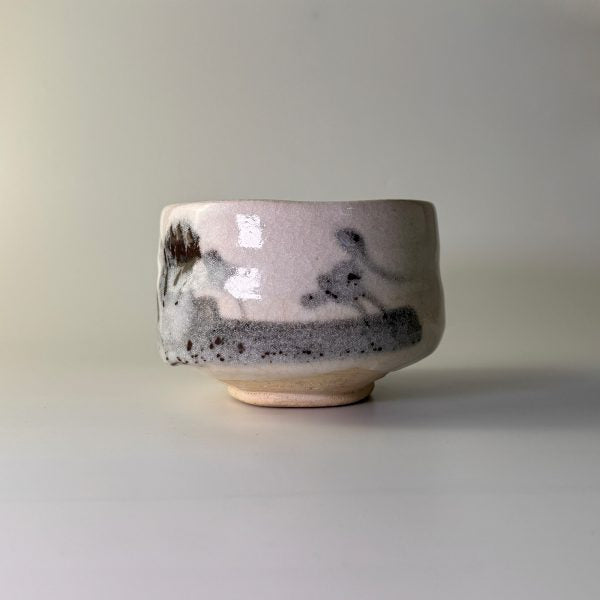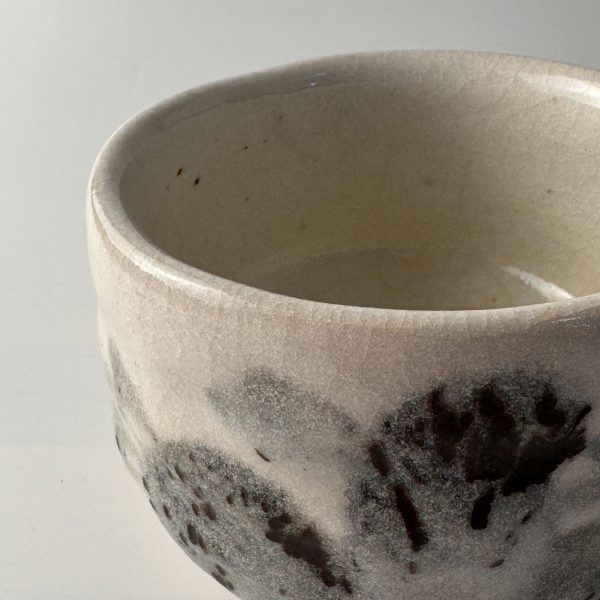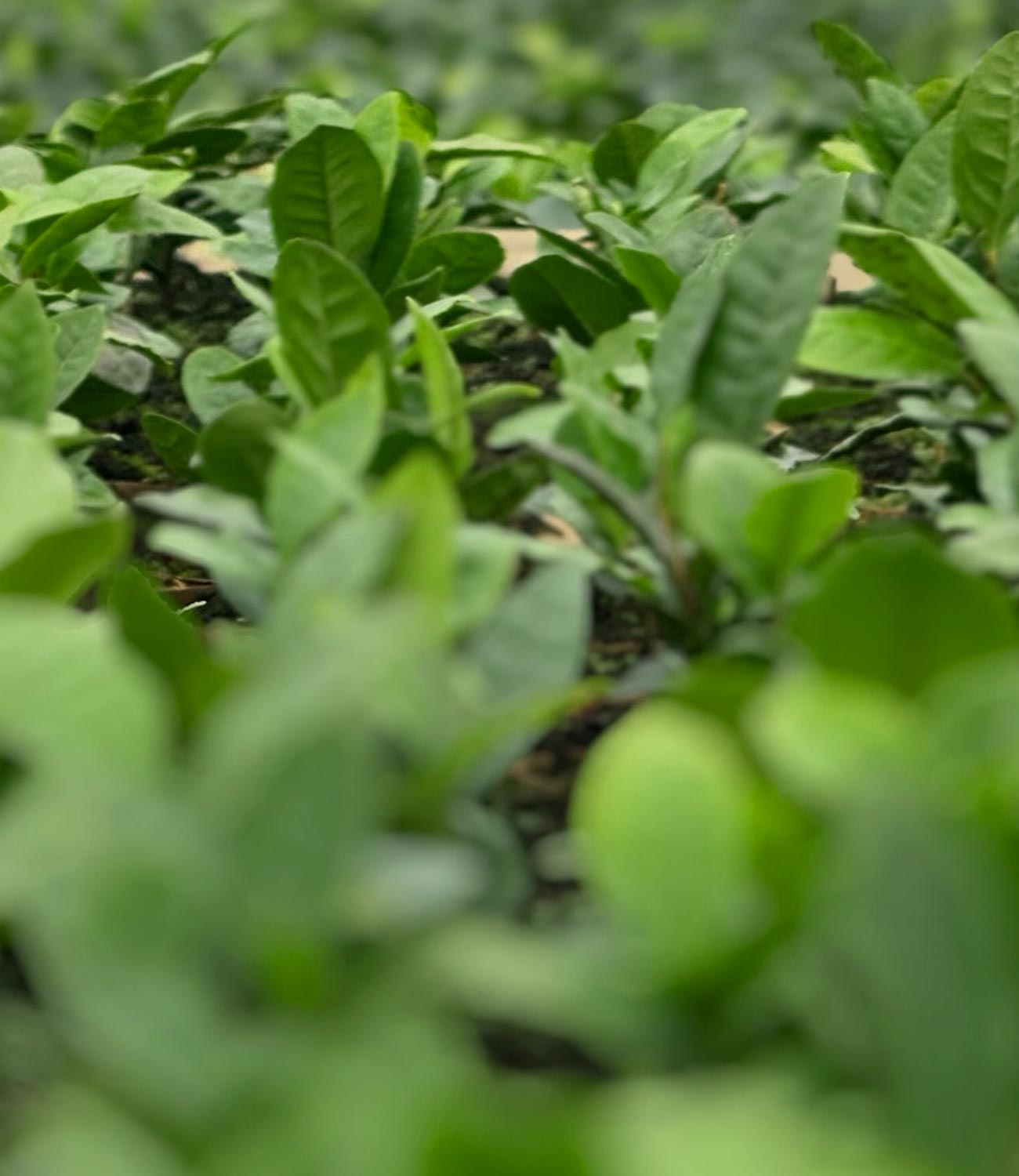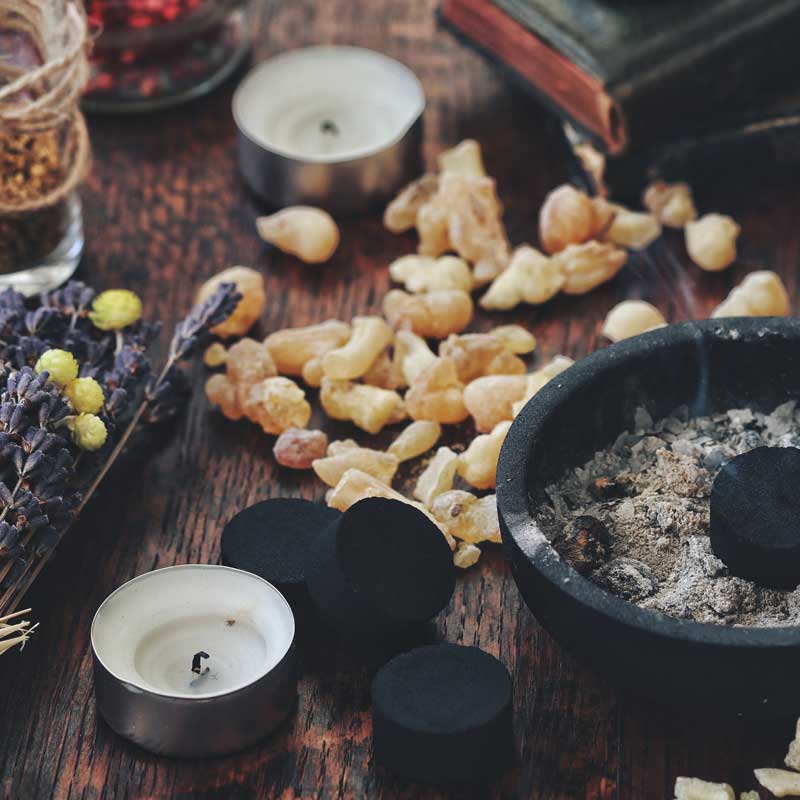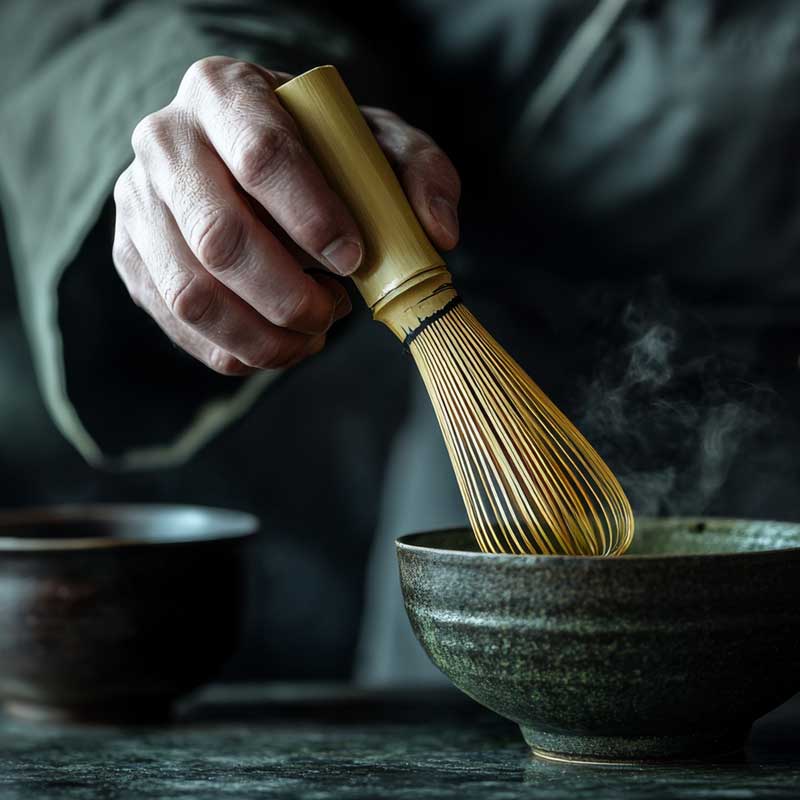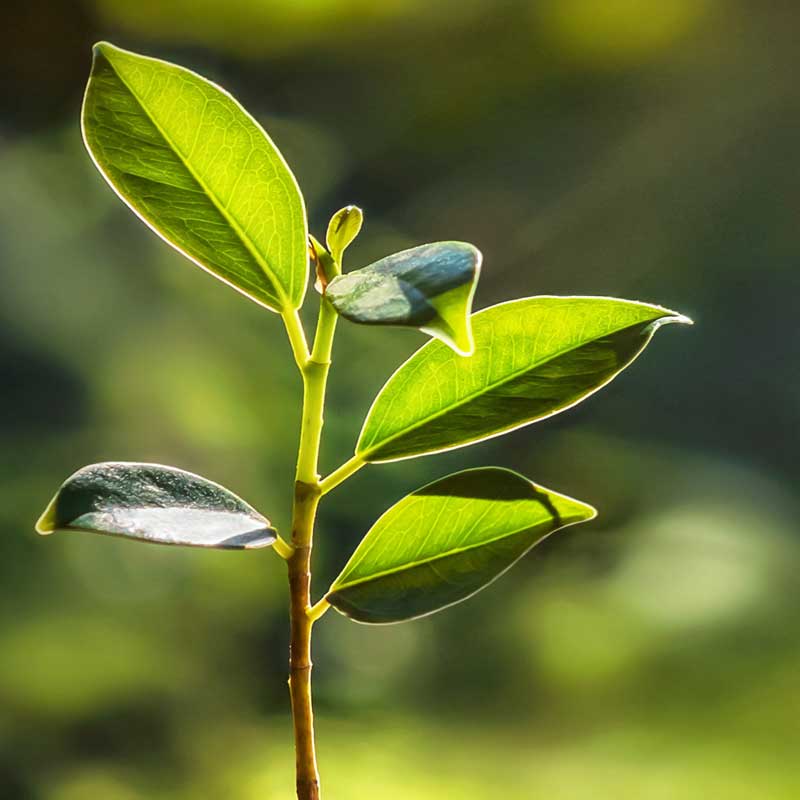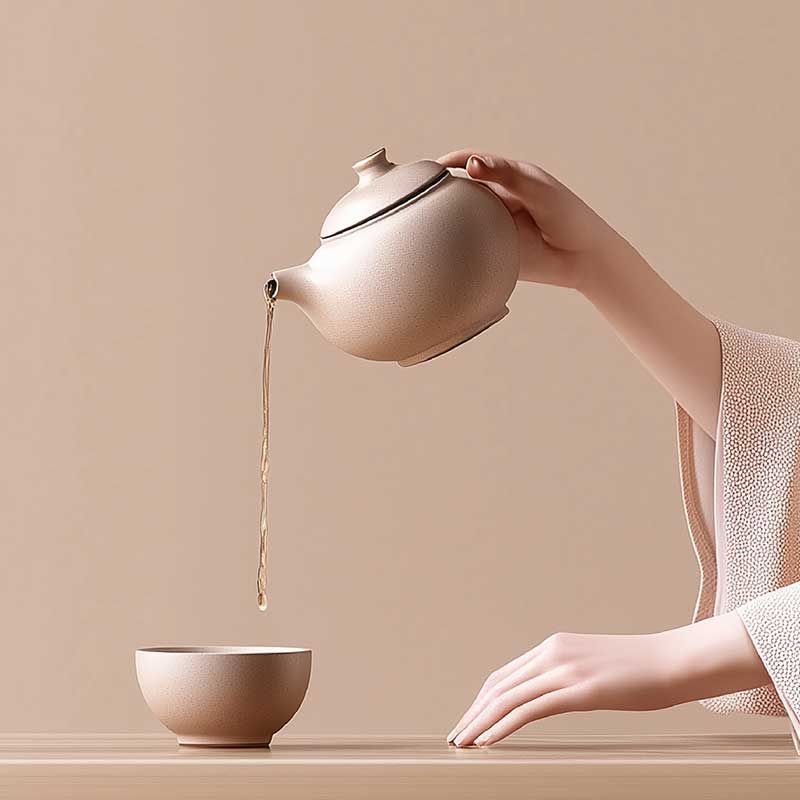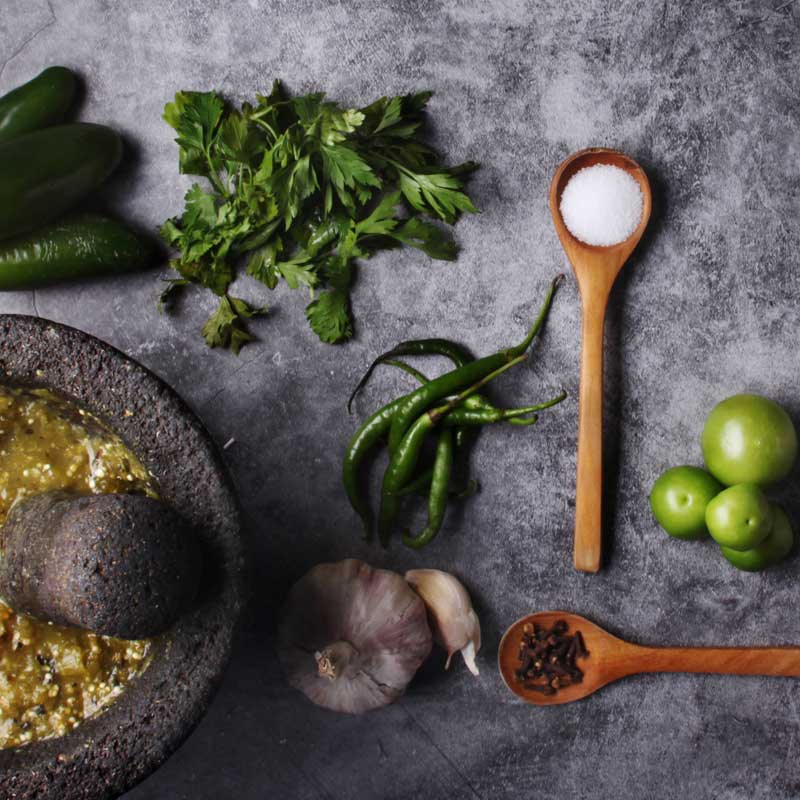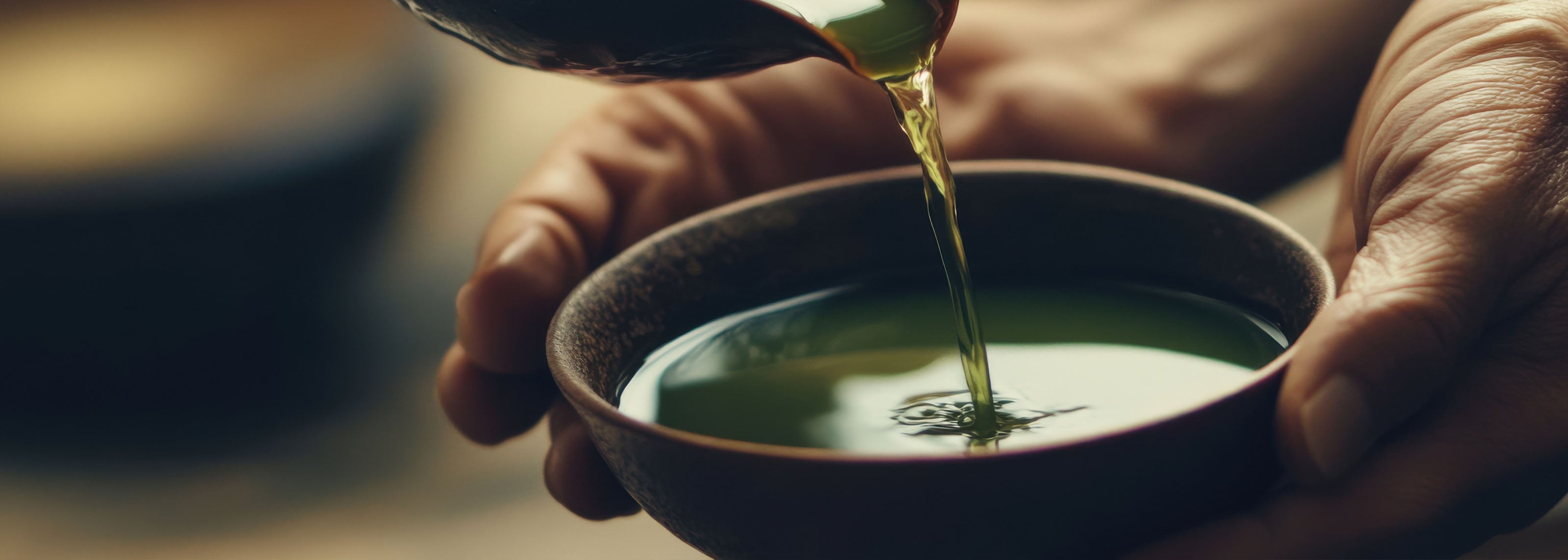
Tea made in Germany
Germany's largest tea farm has been under construction since 2022 on the outskirts of the vibrant metropolis of Berlin. A project dedicated to the cultivation of the tea plant Camellia sinensis, the basis for the production of green, black, and white tea, oolong, pu-erh, matcha, and countless other specialties.
You can find out more about our project from us
Tea made in Germany
Germany's largest tea farm has been under construction since 2022 on the outskirts of the vibrant metropolis of Berlin. A project dedicated to the cultivation of the tea plant Camellia sinensis, the basis for the production of green, black, and white tea, oolong, pu-erh, matcha, and countless other specialties.
You can find out more about our project from us


"Eine Pionierin will Deutschland zur Teebaunation machen".
Clara Suchy
DIE ZEIT 25 Juli 2025

"Growing Karma, Exotische Feldfrüchte in Brandenburg"
Nadine Krüger
ZDF Volle Kanne 21. Juli 2025

"Antje Kühnle baut seit zwei Jahren in Brandenburg Tee an"
Dörte Störmann ZDF Heute Mittagsmagazin 15. Juli 2025

„Erste großflächige Teeplantage Deutschlands entsteht in Schünow“
Philipp Rother
rbb24.de 09. Juli 2025

Tea-Time in Brandenburg: Antje Kühnle ist Chefin der ersten Tee-Farm in Deutschland
Jutta Abromeit MAZ 9. Juli 2025

"Wo Brandenburg wie Japan schmeckt"
Jonathan Guggenberger
Frankfurter Allgemeine Sonntagszeitung 6. Juli 2025

Wonderful gift idea
I bought a tea bowl as a gift for a friend and she was delighted! It arrived beautifully packaged.

„Tee aus Brandenburg … unser Pionierprojekt“
rbb & ARD
21. Mai 2025

"Ein inspirierendes Beispiel für Kreativität und Engagement für eine nachhaltige Zukunft"
Nils Bader, Green Product Award 15. Mai 2025

„Mit Growing Karma entsteht …Deutschlands größte Teefarm.“
Anna Goretzki Deutschlandfunk Kultur Länderreport 24. März 2025

"Permakultur ist ein Konzept ... orientiert an vorhandenen Ökosystemen"
ETL Das Grüne Mandat 11. November 2024

"Growing Karma … Verbindung von Nachhaltigkeit und Teekunst“
Gewinner des GREEN INNOVATOR Award 05. November 2024

"Es ist Wahnsinn, was hier in kürzester Zeit entstanden ist"
Benjamin Hummel, Agrarberater ETL 11. November 2024
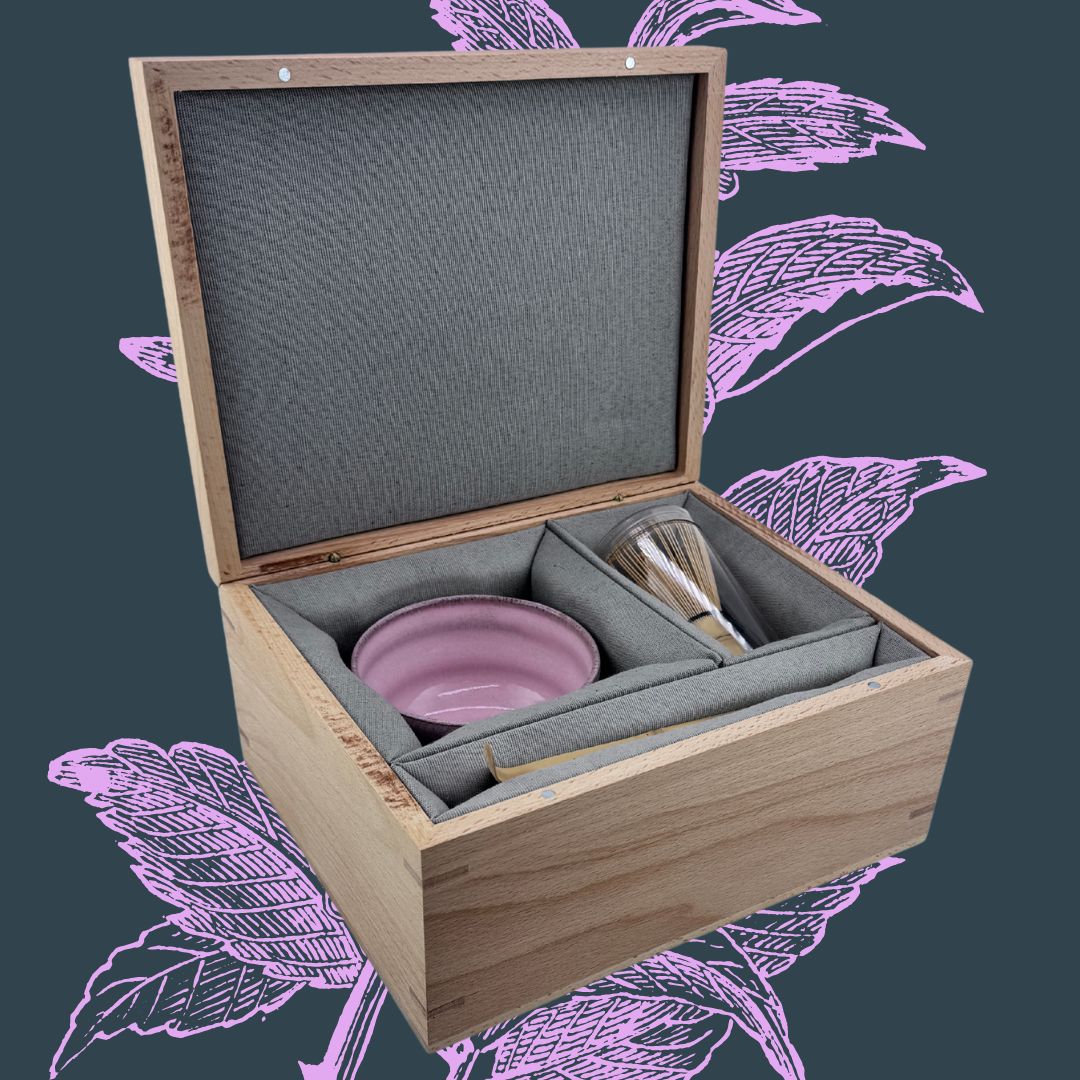
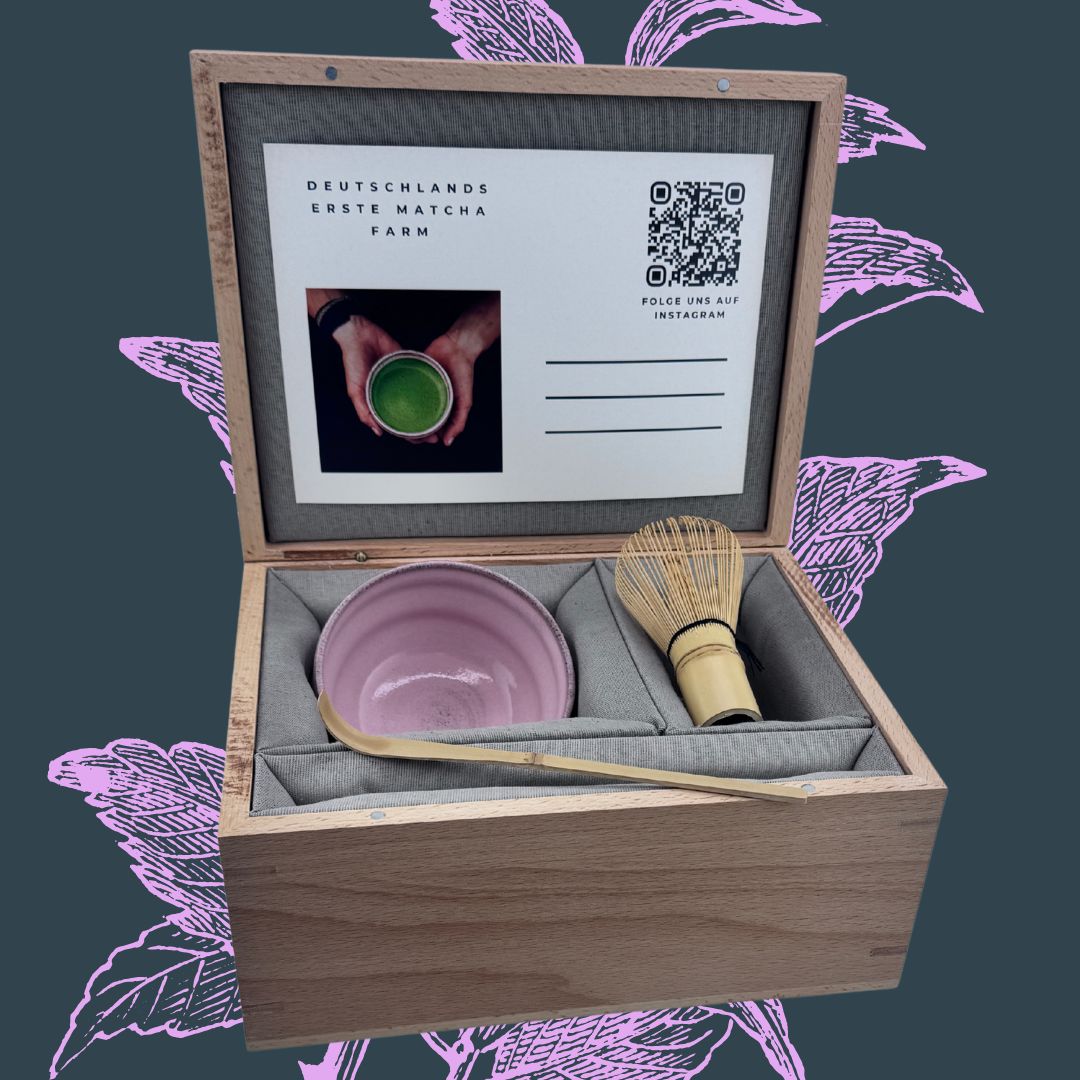
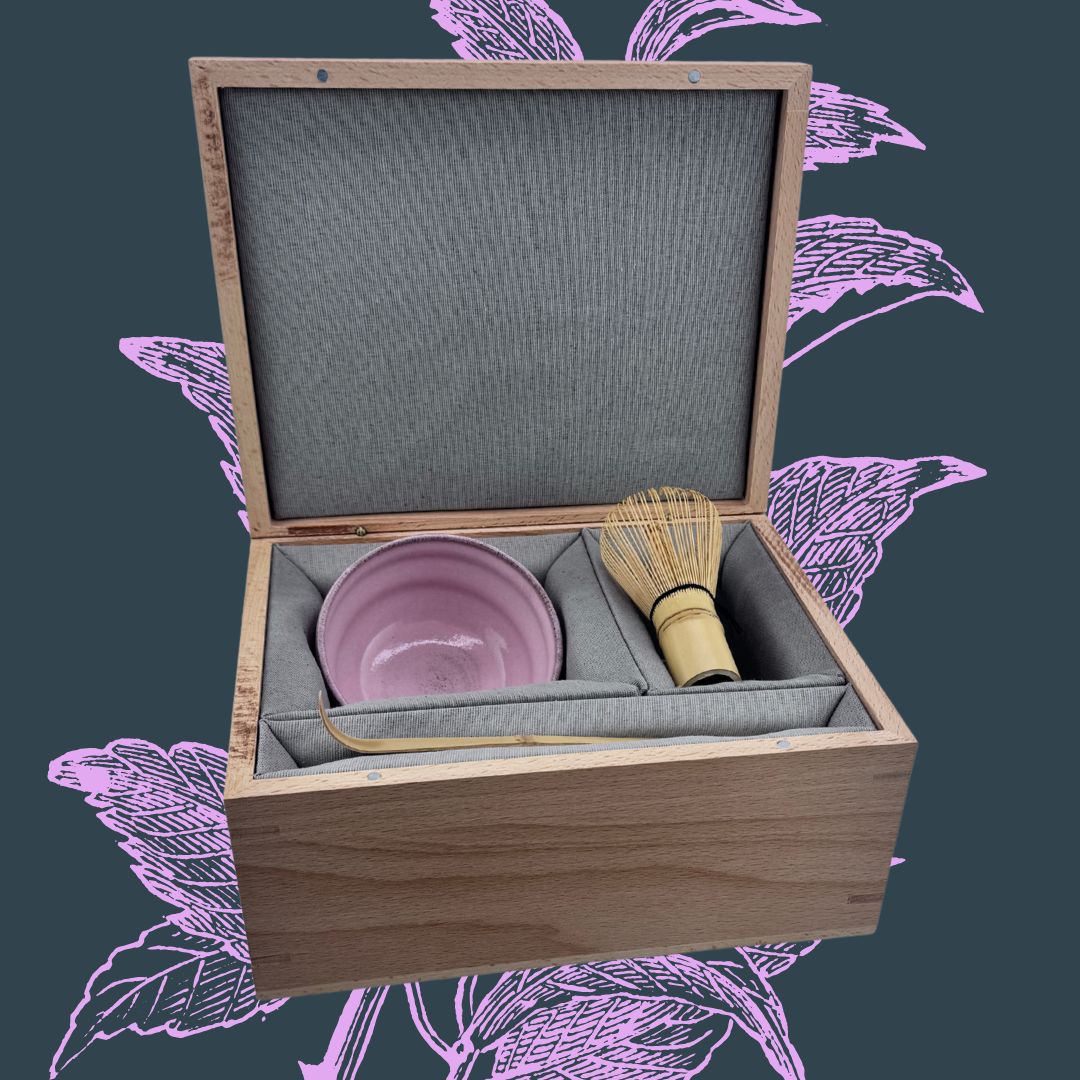
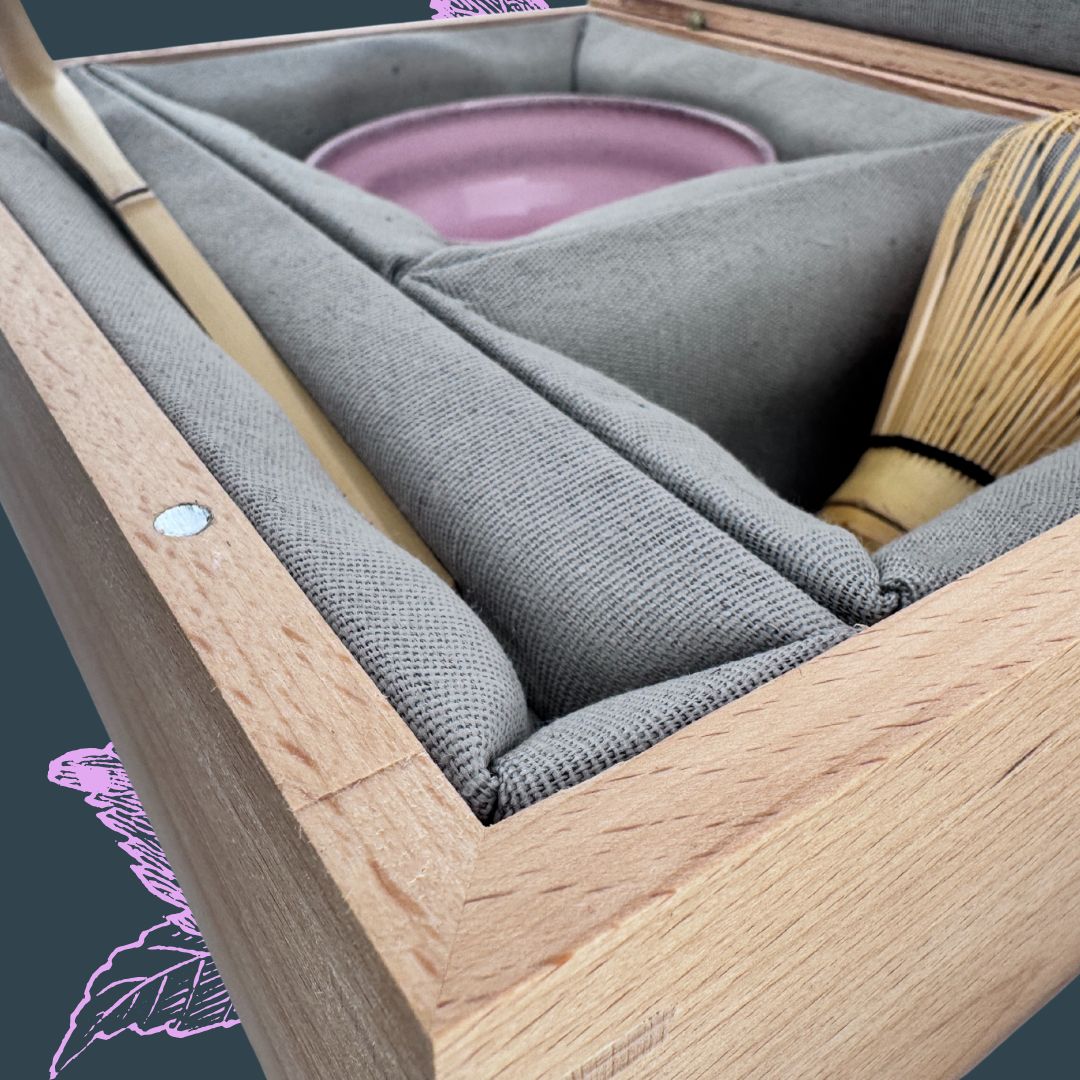
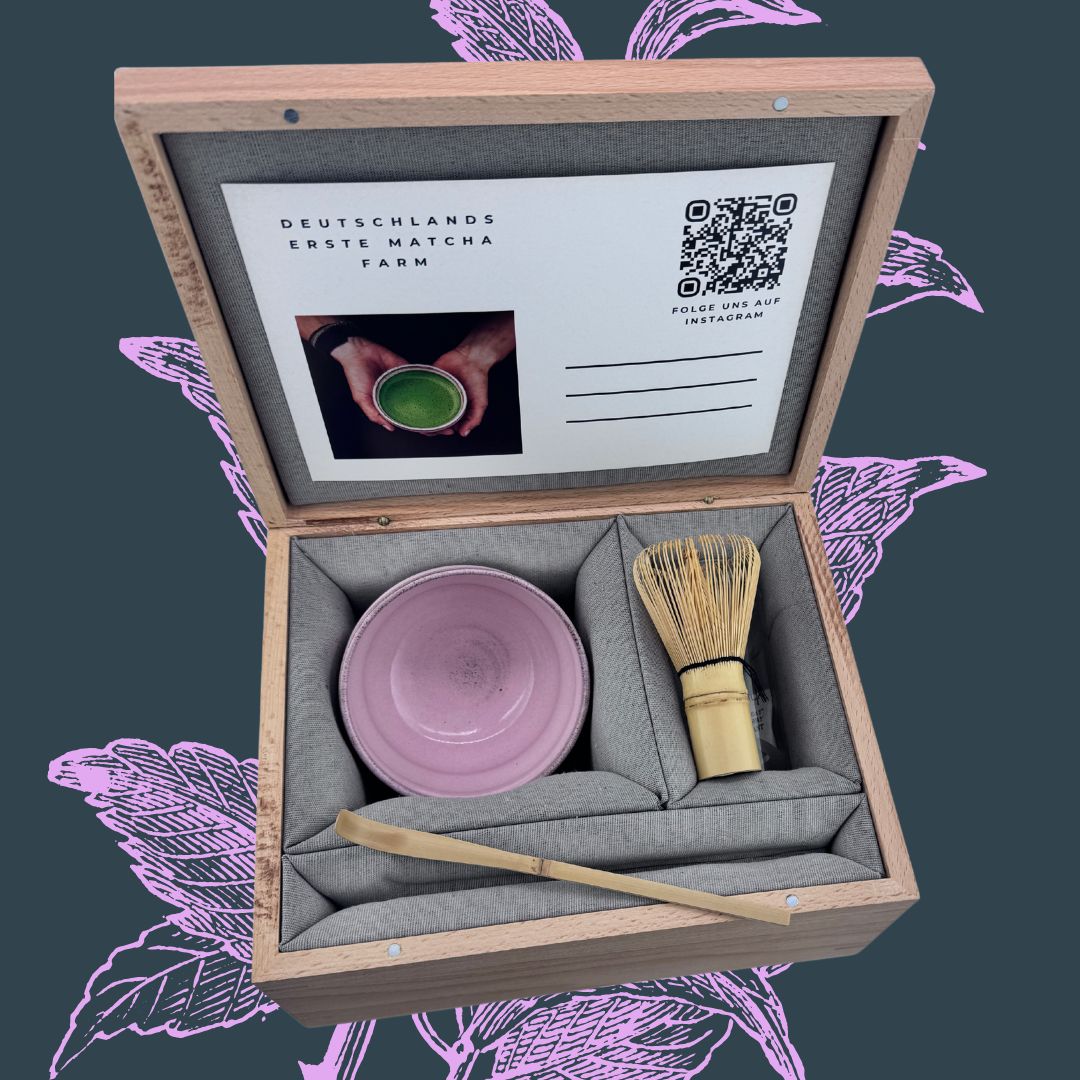
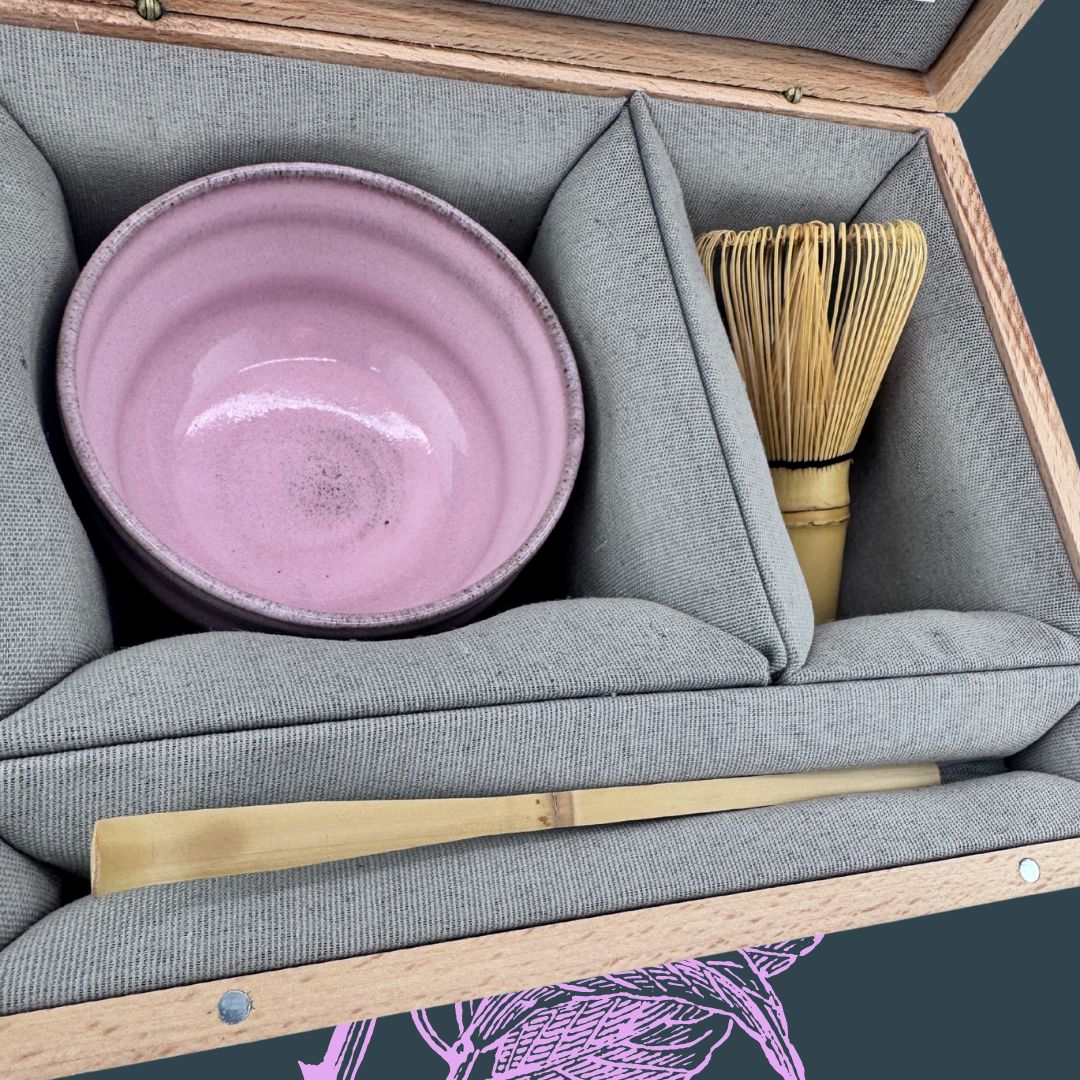
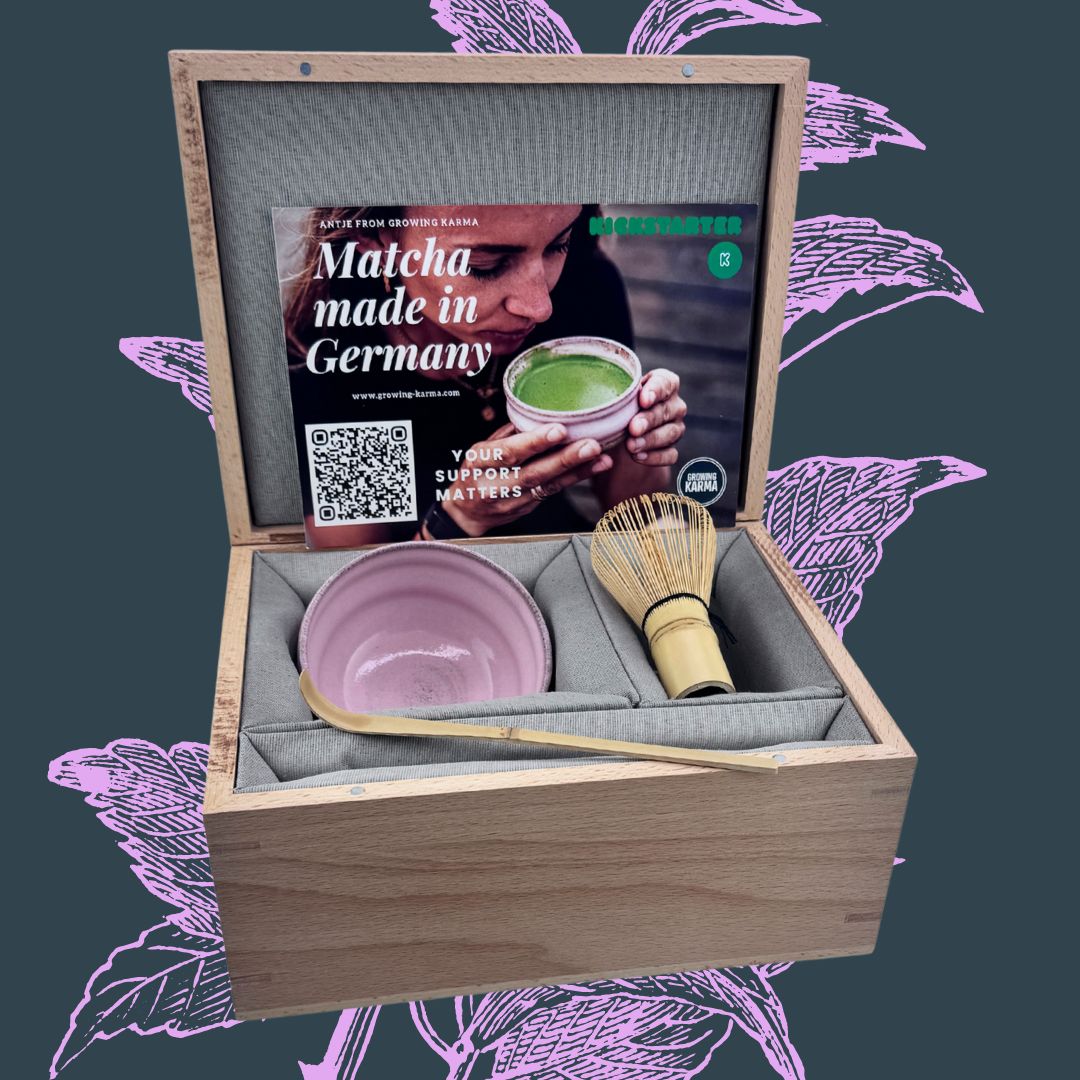
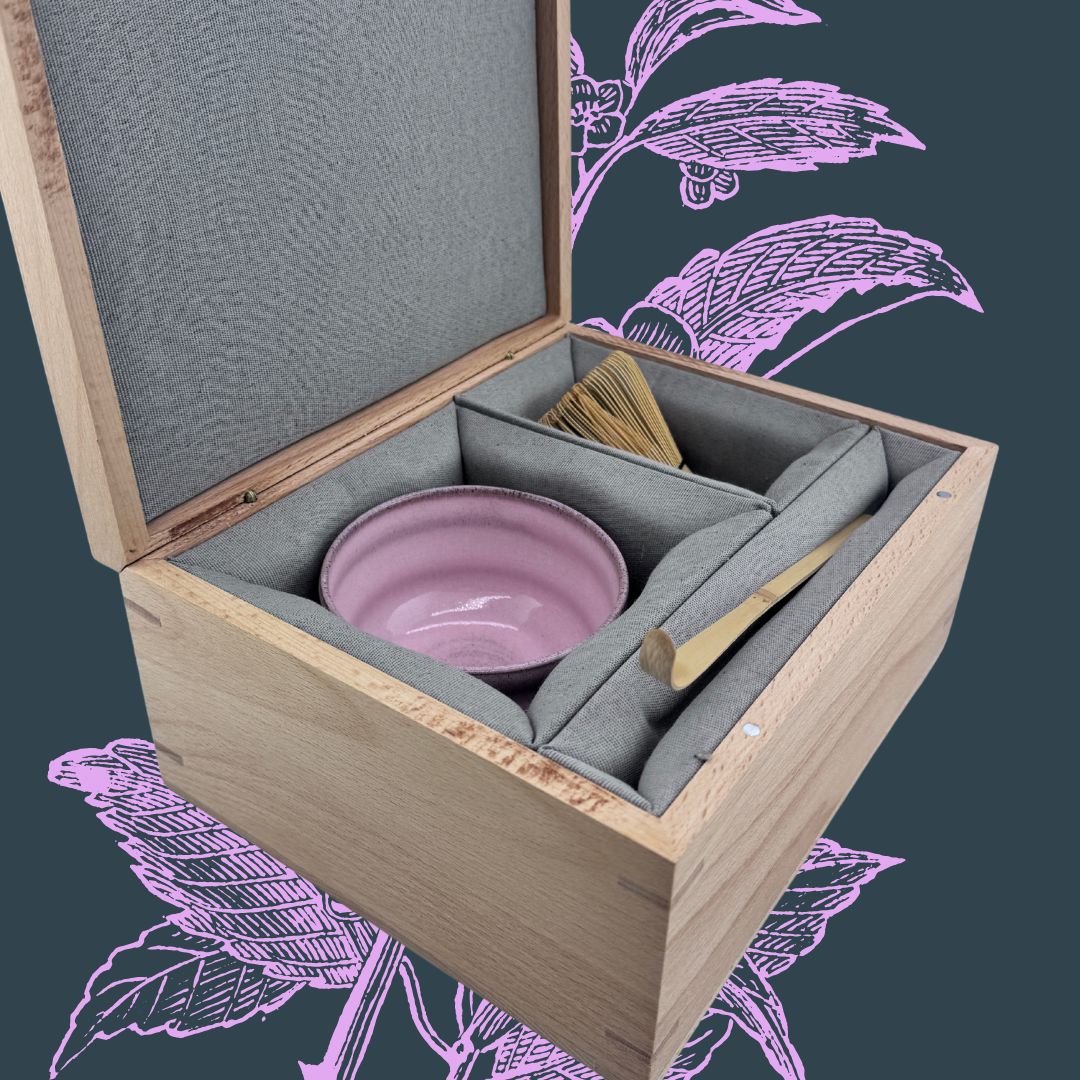
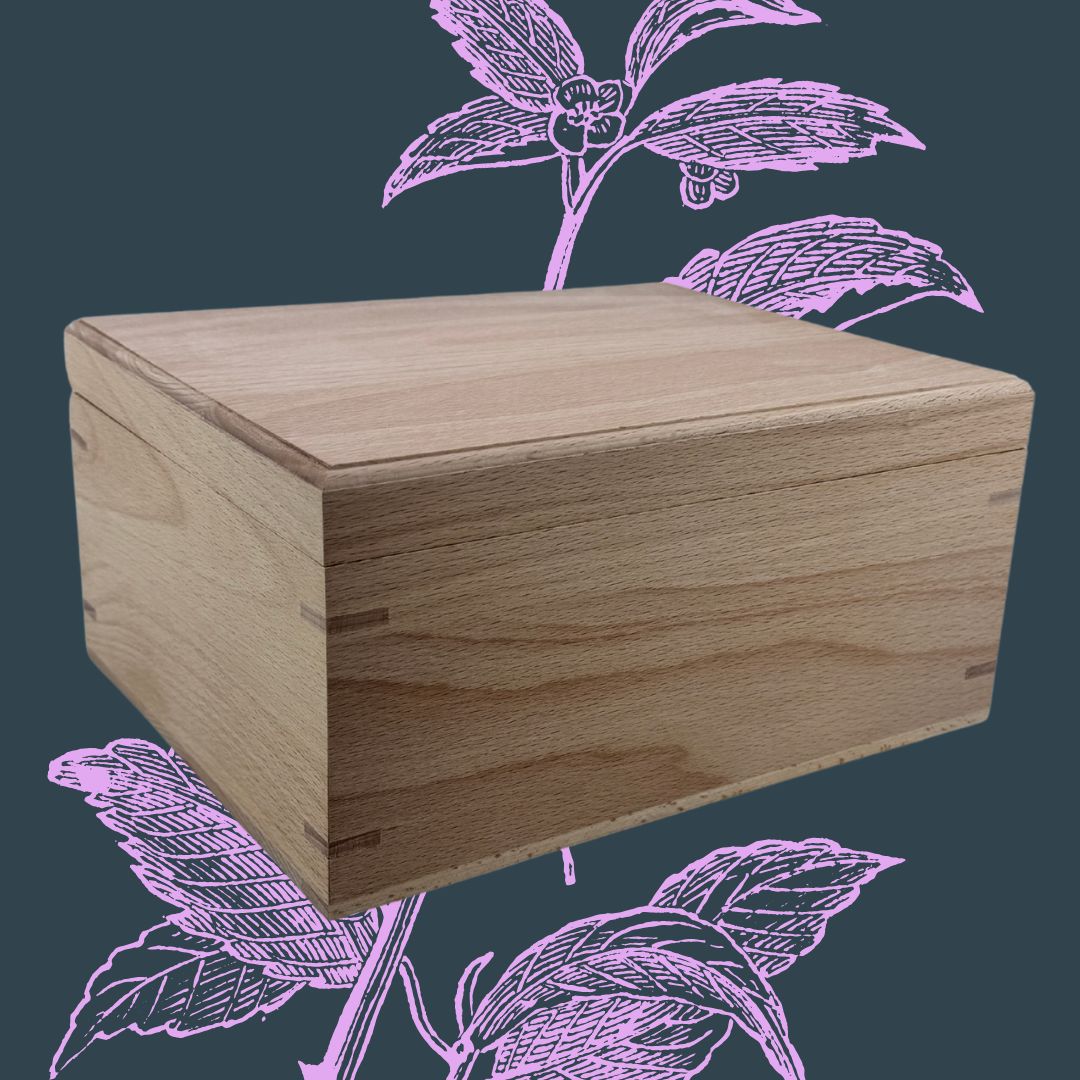
Matcha Set Sakura – Dein Ritual beginnt hier
Mit diesem Sakura Matcha Set holst du dir ein fein abgestimmtes Ensemble nach Hause, das dir die Zubereitung von Matcha in seiner ursprünglichen Form ermöglicht – und durch die edle Vollholzkiste gleichzeitig ein außergewöhnliches Weihnachtsgeschenk darstellt. Die Kiste besteht aus hochwertigem Vollholz und ihr Deckel schließt dank einer dezenten Magnetleiste sanft und sicher. In der maßgefertigten Einlage aus grauem Canvas liegen der Bambus-Chasen, der elegante Chashaku und die farblich harmonische Matcha-Schale geschützt und stillvoll arrangiert.
Vier Komponenten, ein harmonisches Matcha-Erlebnis
Der Chasen sorgt für einen cremigen, luftigen Matcha, während dir der Chashaku eine präzise Dosierung ermöglicht. Die Matcha-Schale überzeugt durch ihre klare Form und die ruhige, sanfte Farbgebung. Gemeinsam mit der robusten Vollholzkiste – deren magnetischer Deckel sich weich schließend anfühlt – wird das Set zu einer idealen Geschenkidee für Weihnachten, besonders für Menschen, die Sinn für Qualität und kleine Auszeiten haben.
Design trifft Tradition: die Sakura-Edition
Die Gestaltung des Sets setzt auf eine ausgewogene Formensprache und eine dezente Farbpalette, die an die zarten Töne traditioneller Sakura-Keramik erinnert – ganz ohne Blütenmotiv. Die graue Canvas-Einlage fügt sich harmonisch ein und unterstreicht die Wertigkeit der Kiste aus Vollholz. Durch den magnetischen Verschluss bleibt alles sicher an seinem Platz, was das Set auch als Weihnachtsgeschenk besonders ansprechend macht.
Warum ein vollständiges Matcha Set den Unterschied macht
Jede Komponente erfüllt eine klare Rolle: Der Chasen bringt Struktur in den Tee, der Chashaku sorgt für eine gleichmäßige Dosierung, und die Schale bietet idealen Raum für die Zubereitung. Die hochwertige Vollholzkiste mit magnetischem Deckel sorgt dafür, dass die Utensilien geschützt und gleichzeitig elegant präsentiert werden. Durch dieses harmonische Zusammenspiel wird das Set zu einem Weihnachtsgeschenk, das nicht nur schön aussieht, sondern auch echten Nutzen schenkt.
Ein Matcha Set für Momente, die bleiben
Dieses Set lädt dich dazu ein, morgens wie abends kleine Auszeiten bewusst zu gestalten. Die Kombination aus hochwertigen Materialien, ruhiger Farbwelt und der sicheren, magnetisch schließenden Vollholzkiste macht es zu einem Geschenk, das besonders zu Weihnachten Freude bereitet und lange begleitet – ein stimmiges Ritualset für ruhige, konzentrierte Momente.
Growing Karma – Experten für Matcha & Teepflanzen
Wir bei Growing Karma widmen uns seit vielen Jahren der Kultivierung von Camellia sinensis in Deutschland. Als Pioniere im heimischen Teeanbau fließt unser Wissen aus der Praxis in jedes unserer Produkte ein. Das Sakura Matcha Set ist Ausdruck dieser Haltung: sorgfältig ausgewählt, hochwertig gefertigt und ideal, um dein eigenes Ritual zu vertiefen.
Durch die edle Vollholzkiste aus echtem Vollholz, den magnetischen Deckel und die harmonische Farbgestaltung eignet es sich zudem hervorragend als Weihnachtsgeschenk – für Menschen, denen du Ruhe, Handwerkskunst und ein besonderes Tee-Erlebnis schenken möchtest.
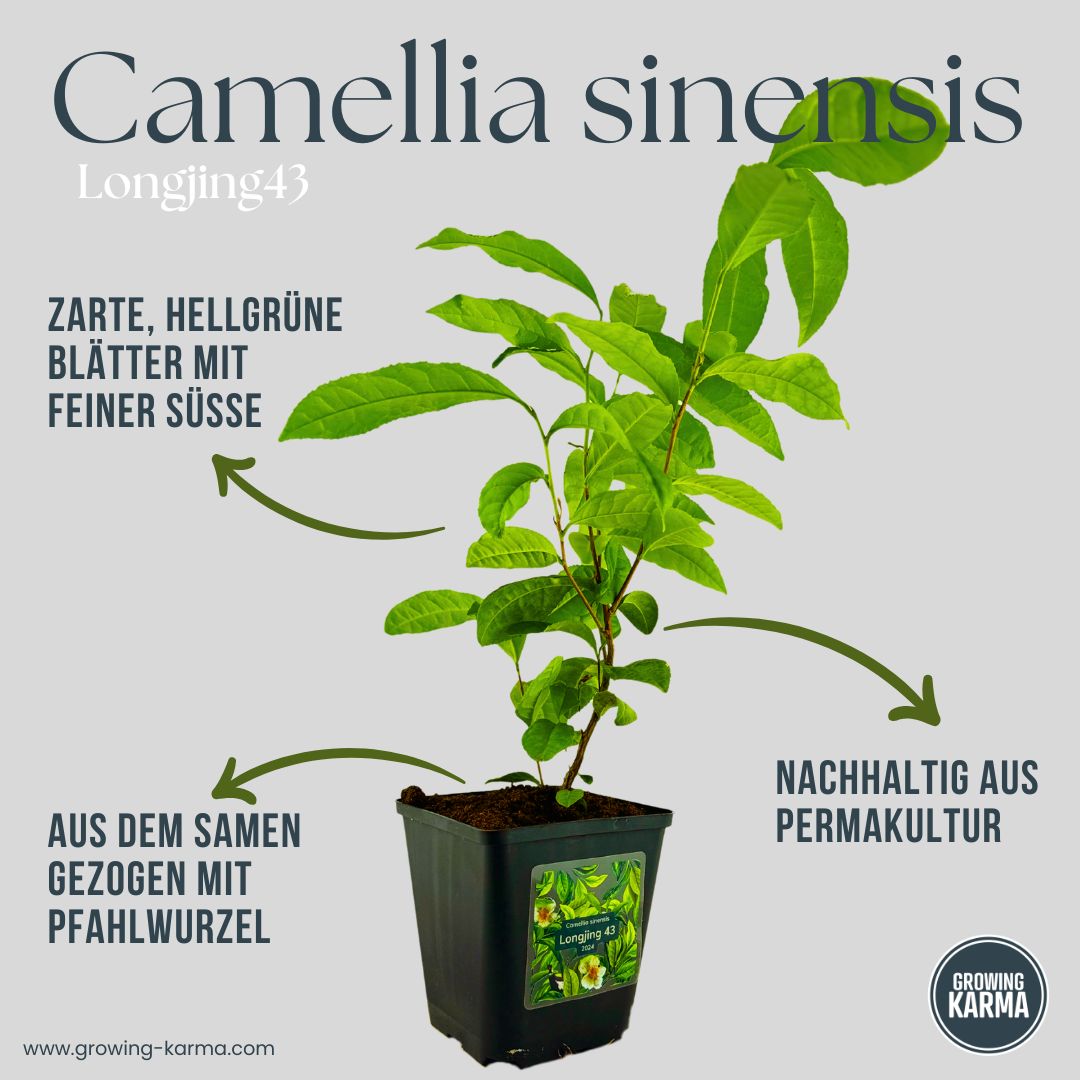
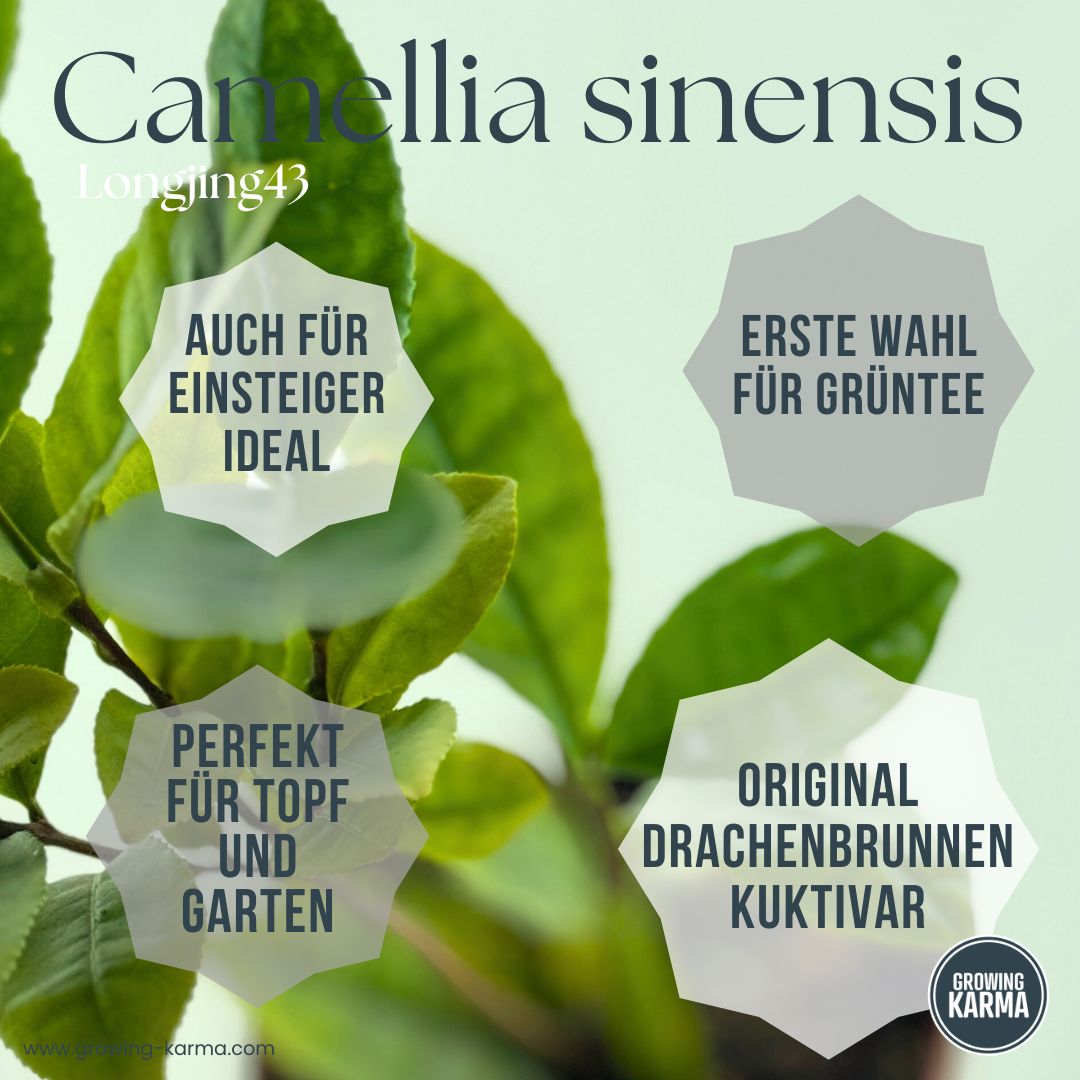
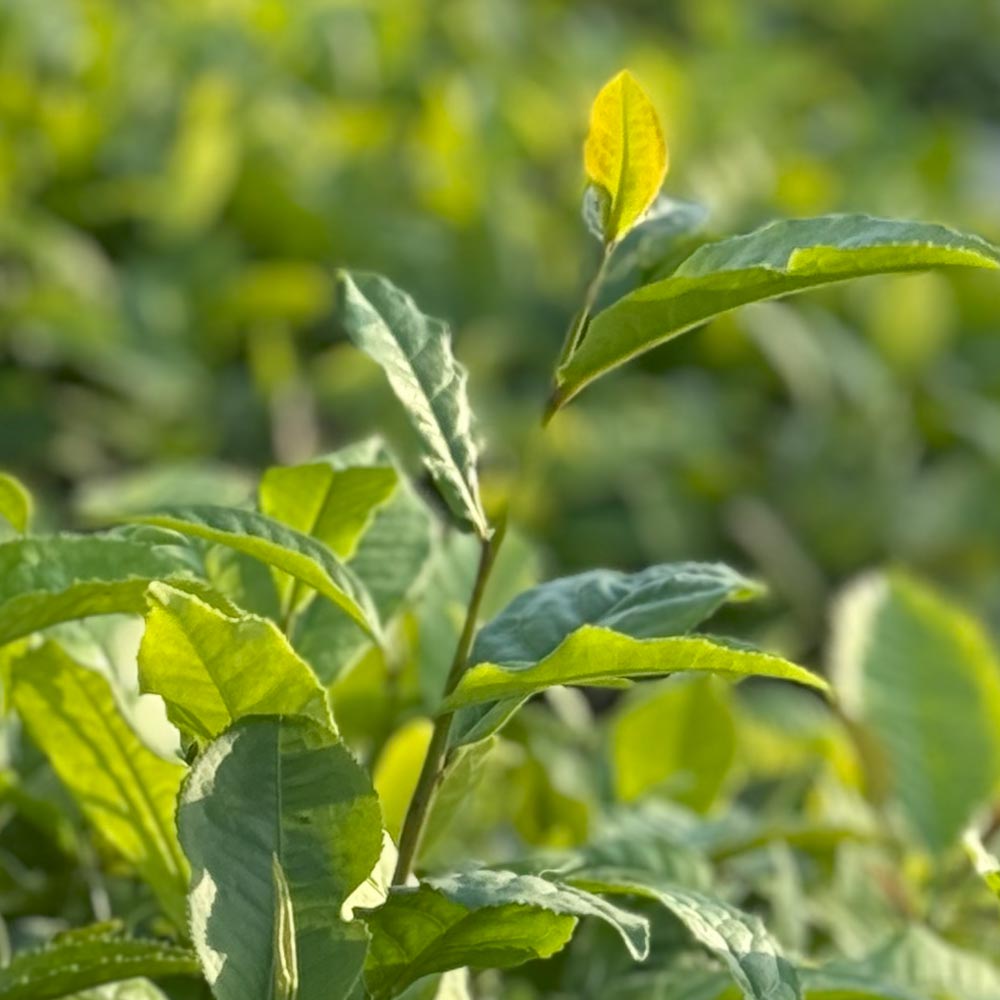
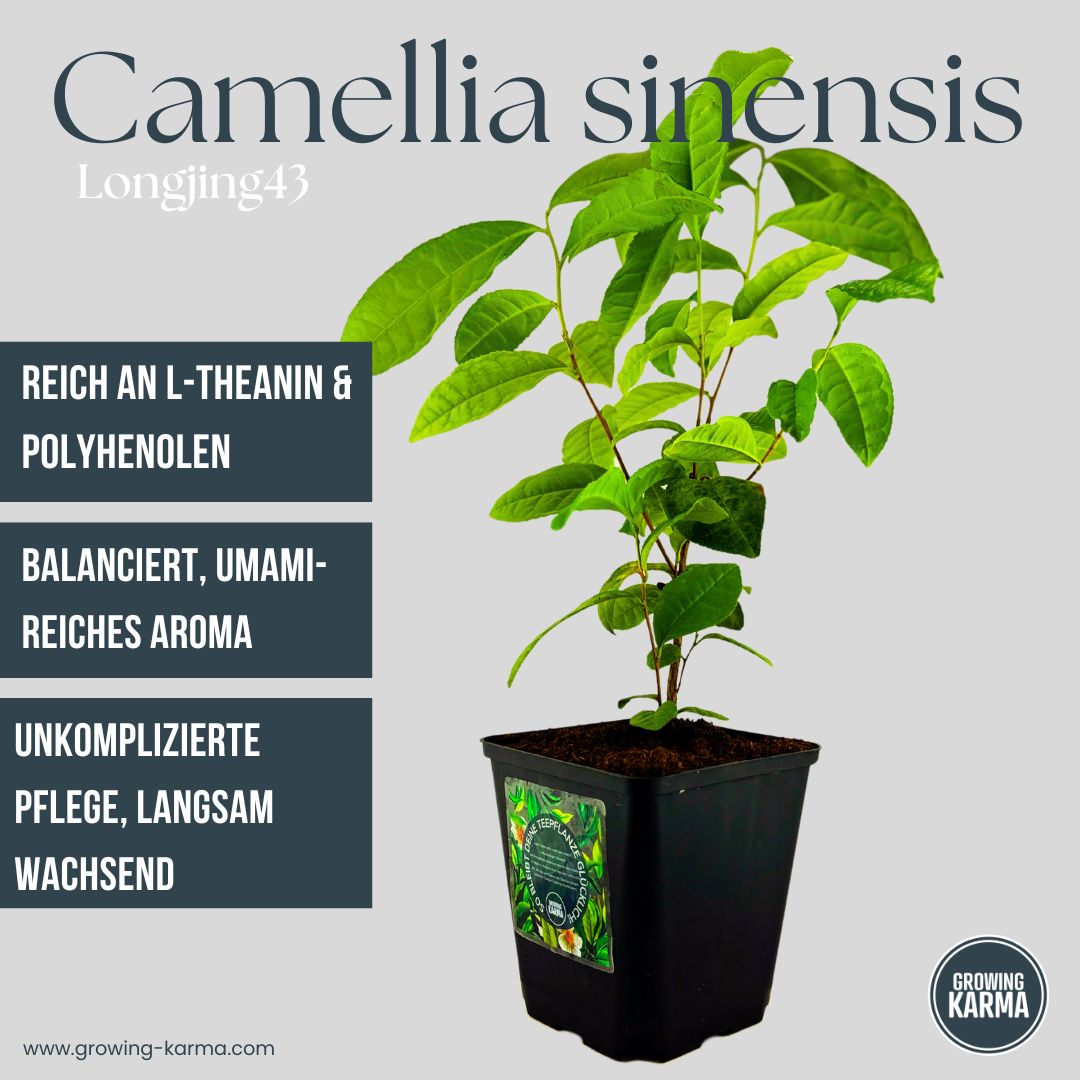
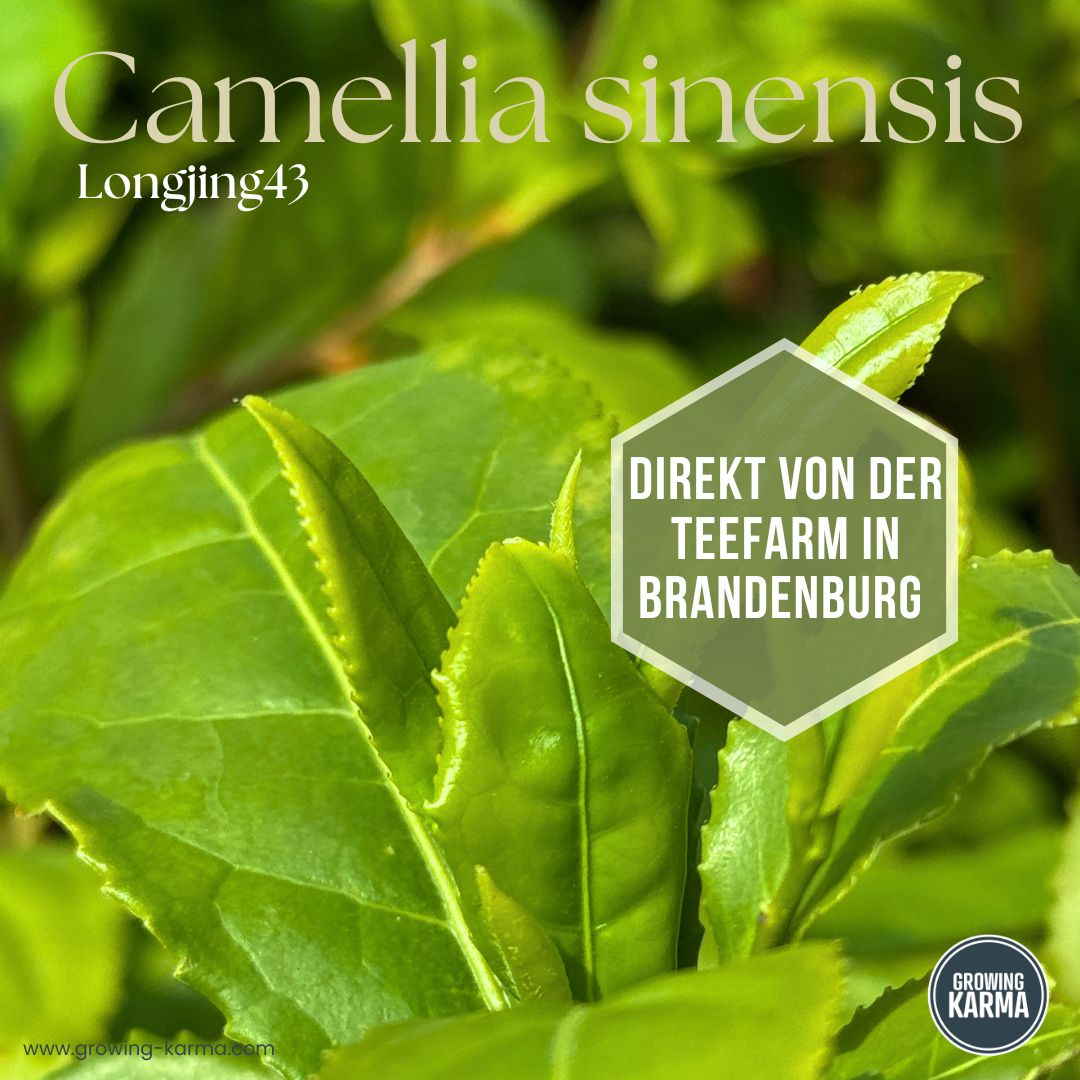
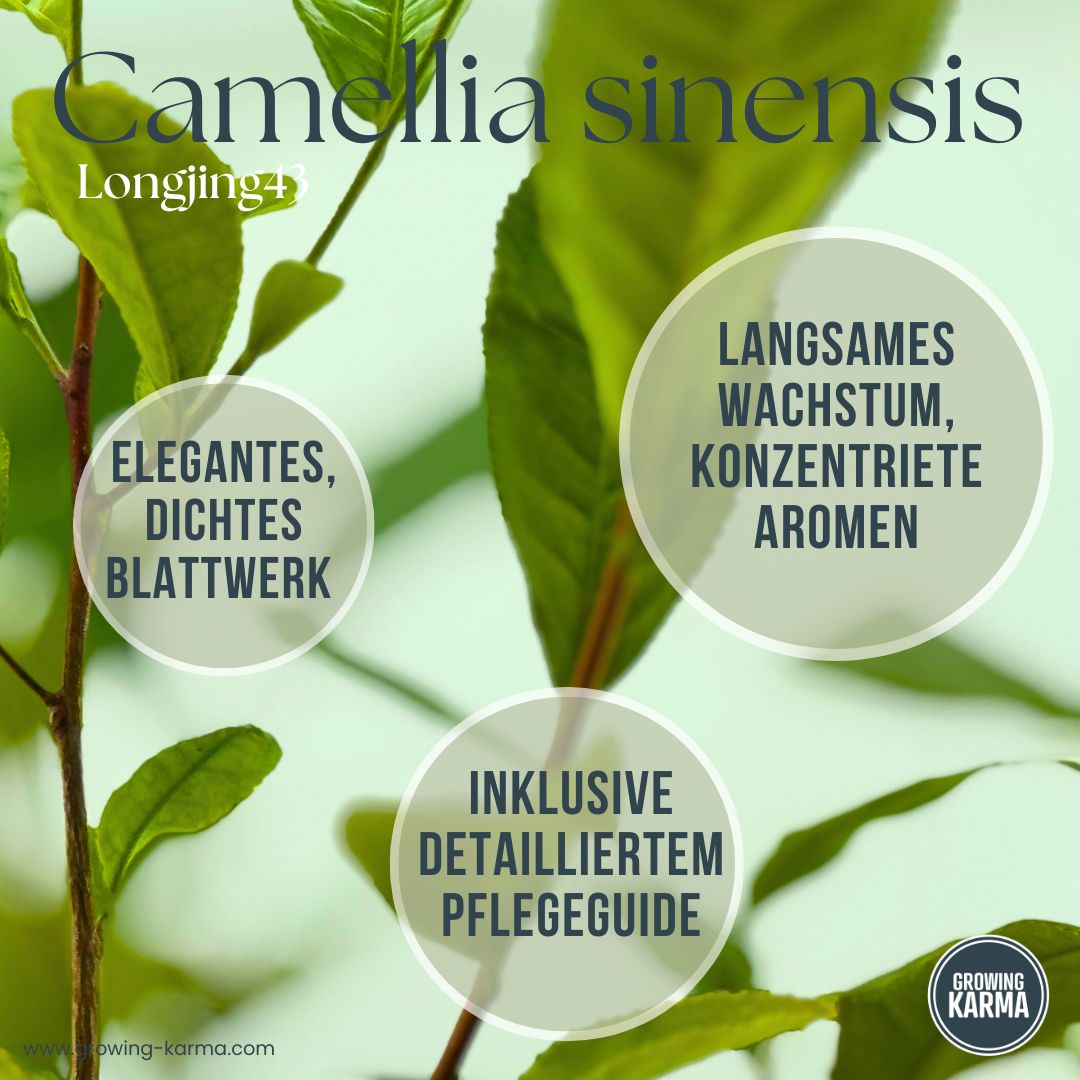
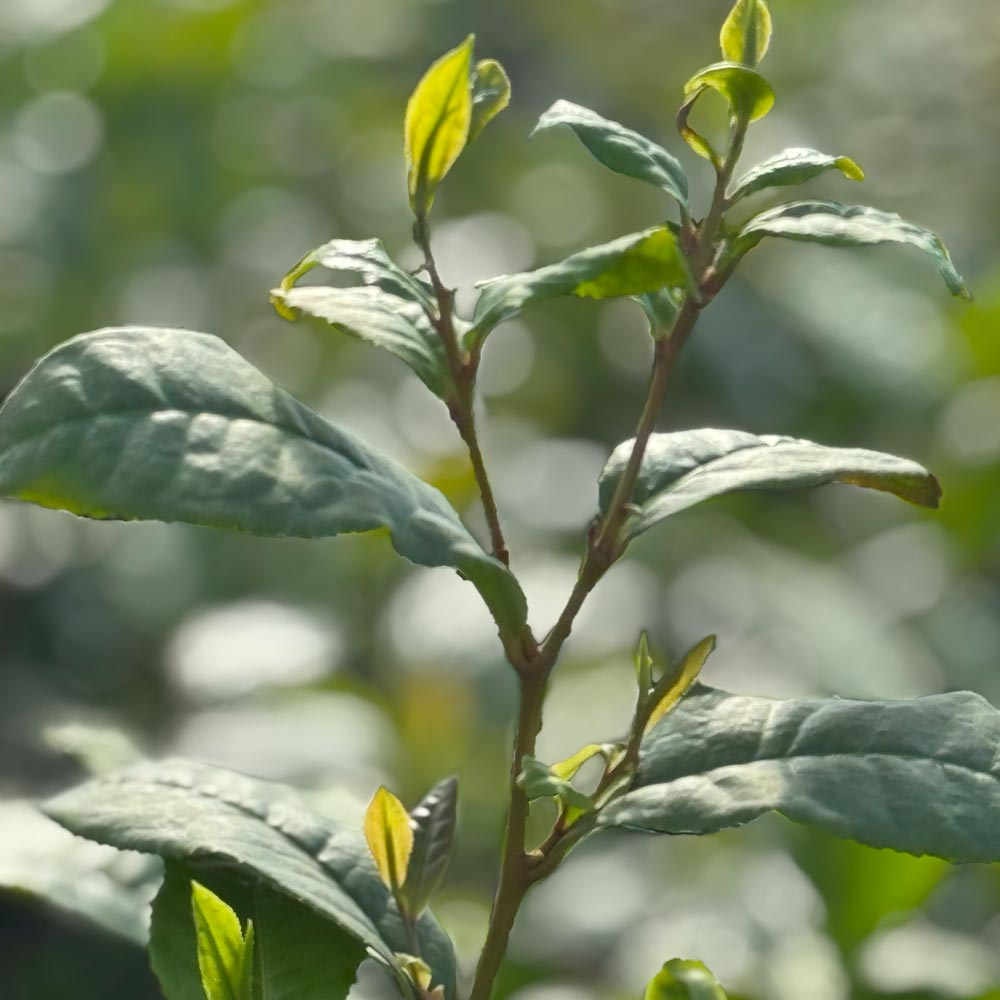
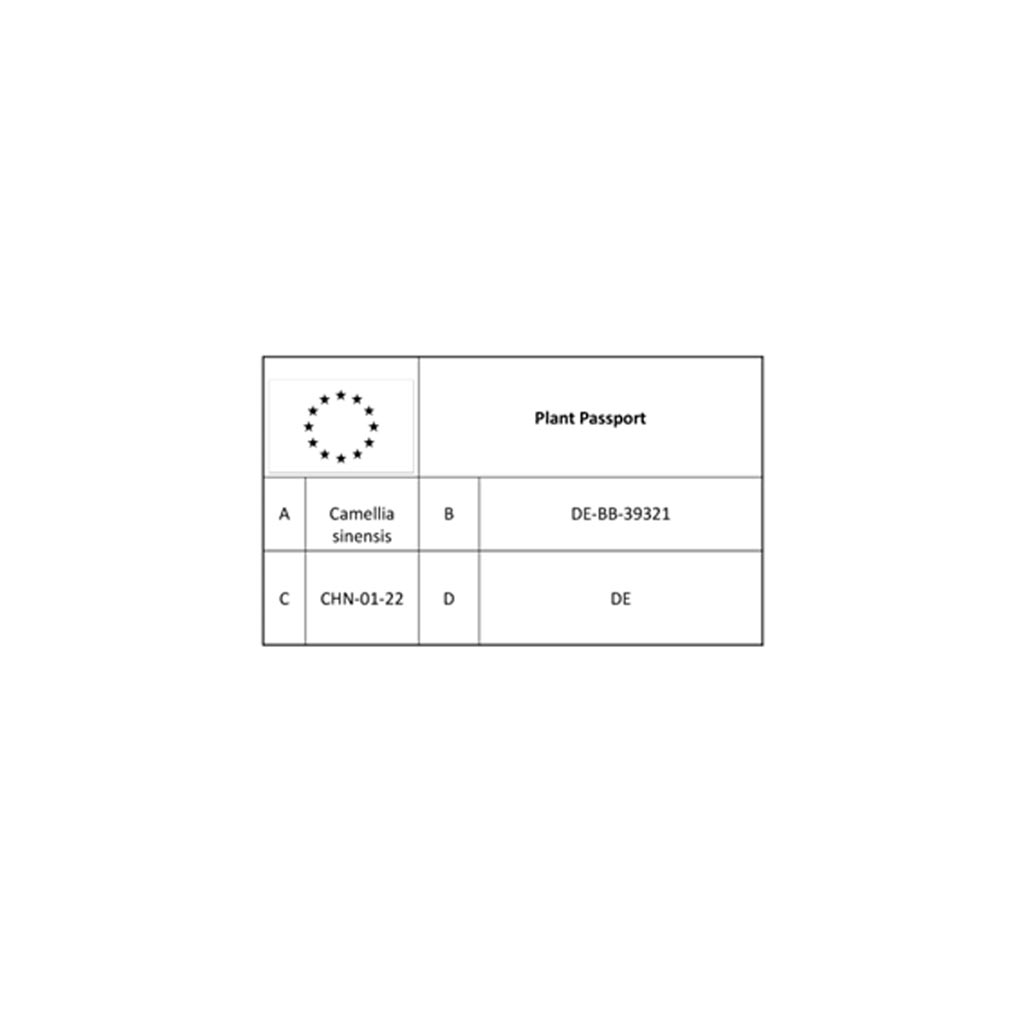
The first step towards your own tea culture
Want to grow your own tea? With Camellia sinensis Longjing 43, this dream becomes a reality. This robust tea plant, grown from seed, not only brings life to your windowsill or garden, but also brings a piece of Far Eastern tea tradition into your home. Growing between 15 and 30 cm tall, it's ready to grow alongside you – day by day, leaf by leaf.
Easy-care and adaptable
The Longjing 43 variety originates from China and is cultivated there for some of the most famous green teas. It is resilient, vigorous, and ideal for growing in pots, raised beds, or outdoors. Whether on a balcony, in a greenhouse, or in partial shade in the garden—this tea plant adapts well. It loves bright locations, low-lime water, and consistent care—without being complicated.
What makes certain tea plants particularly robust or hardy?
Not all tea plants are the same – some defy cold and frost with astonishing resilience. Robust or hardy varieties like Camellia sinensis thrive where others reach their limits. Their resilience is based on several crucial factors.
Adaptation to the climate
Their origins reveal much: Tea plants grown in cooler, mountainous regions such as parts of Nepal, the Himalayas, northern China, Korea, or Japan have adapted to harsh conditions over generations. They develop more resilient leaves and strong root systems—ideal qualities for withstanding frost and wind. This makes them perfect for gardens in more northern locations.
Growth behavior
Hardy tea plants are often characterized by the following features:
- strong growth, even after cold winters
- good frost tolerance at slightly sub-zero temperatures
- compact, bushy growth that protects young shoots
- different leaf sizes – from dense and small to broad and glossy – which react differently to weather
Aromatic and versatile
But it's not just their robustness that's impressive: Many of these varieties surprise with their fresh, clear aromas, which are particularly well-suited to green or freshly harvested tea. Whether as an eye-catcher in the garden or for your own tea enjoyment, hardy tea plants offer both reliability and a distinctive flavor.
These plants invite both passionate gardeners and curious beginners to experience tea culture at home – regardless of the climate.
The Longjing 43 variety originates from China and is cultivated there for some of the most famous green teas. It is resilient, vigorous, and ideal for growing in pots, raised beds, or outdoors. Whether on a balcony, in a greenhouse, or in partial shade in the garden—this tea plant adapts well. It loves bright locations, low-lime water, and consistent care—without being complicated.
When is the best time to plant a tea plant in the garden?
The right time to plant tea
Wondering when to plant your tea plant in the garden? Timing is crucial! The ideal planting window for Camellia sinensis is spring – as soon as the risk of frost has passed and the soil has warmed up slightly, roughly between April and July. This allows the plant to grow in peace without having to contend with the winter cold.
Autumn—between September and October—can also be suitable in milder regions. However, be sure to consider additional protection: a thick layer of mulch or plant fleece will help if it does get cold again. In its first year, the tea plant prefers a slow start—it shouldn't enter winter unprepared.
Whether in a pot or directly in the garden, handle the roots gently and water thoroughly after planting. Soon, the first glossy green leaves will appear—the beginning of your very own tea journey.
Always by your side: The digital care guide
So you always know what your tea plant needs, you'll have access to a digital care guide – available 24/7. This guide will teach you step by step how to optimally care for, prune, and harvest your Camellia sinensis . From the first shoots to your own cup of tea, this guide will guide you through every phase.
Here you will find our digital care instructions and a link to our blog where we publish useful tips under the heading "Care and Maintenance" .
Sustainable cultivation that brings joy
Longjing 43 quickly demonstrates how vibrant sustainability can be: With proper care, it soon bears tender, aromatic leaves that you can use for green or black tea. Each infusion becomes a moment that not only tastes good, but also reminds you of what truly matters: time, nature, and mindfulness.
Made for growth – with the right fertilizer
If you want to get the most out of your tea plant, don't forget about nutrients: With the right organic fertilizer, you can strengthen its roots, promote leaf formation, and support healthy, vigorous growth. This will make your Longjing 43 an integral part of your personal tea culture.
A piece of Growing Karma for your home
This tea plant isn't just an ornamental plant—it's the beginning of a relationship. A relationship with your tea, with nature, and perhaps even with yourself. It represents patience, the joy of taking small steps, and the happiness of seeing something grow with your own hands. And that's exactly what Growing Karma is all about.
Pictures similar - each plant is truly unique :-)
Discover the joy of growing your own tea with Growing Karma!
Camellia sinensis cultivar Longjing 43
With the Longjing 43 tea plant, a piece of Chinese tea art moves right into your home. This time-honored Camellia sinensis cultivar originates from Zhejiang Province—the birthplace of the famous Longjing tea—and is known for its outstanding aroma and the delicate, flat-pressed leaves that have made this tea world-famous. Longjing 43 is perfect for home cultivation, combining centuries-old tradition with modern robustness—ideal for balconies, terraces, or gardens in Central Europe. The plant impresses not only with its uniform leaf structure and fresh, slightly nutty aroma, but also with its ability to adapt excellently to changeable weather conditions. You aren't simply cultivating a tea plant, but rather a living connection to the history and craftsmanship of Chinese tea culture—a quiet ritual that you can now shape yourself every day.
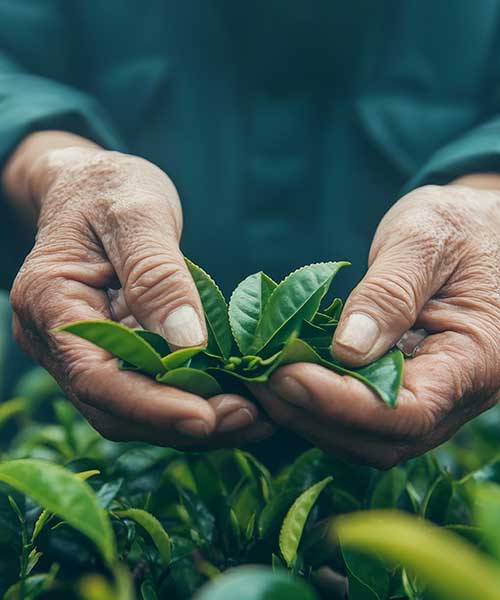
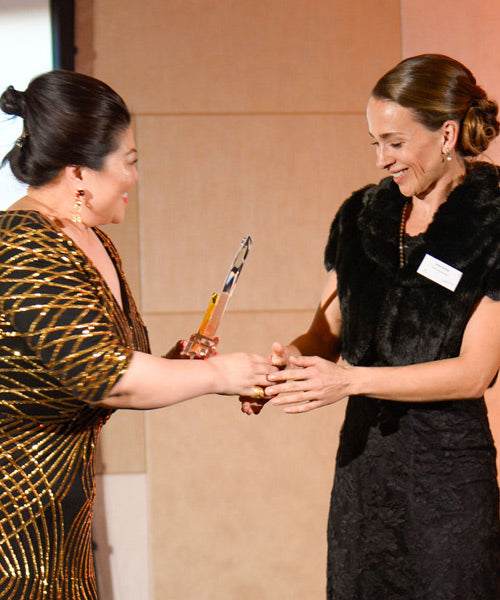
Our founder, Antje, brings with her training in viticulture and oenology a profound knowledge and passion for sustainable agriculture. Whether raising cattle in Canada or managing an e-commerce company, her strengths lie in her versatility and broad expertise. Together with her team, she pursues the goal of growing tea in Germany in an ecologically and socially responsible manner.
She focuses on permaculture, biodiversity, a sustainable transformation of agriculture, and resource-efficient animal husbandry. She inspires others to help shape an environmentally friendly future. She was recently awarded the GREEN INNOVATOR OF THE YEAR award for this.
At Growing Karma, we apply permaculture principles to practice sustainable and regenerative agriculture. A central element of our philosophy is the complete use and recycling of all plant parts to minimize waste and promote natural cycles.
More info
